A Day trip to Nikko (Japan)
A popular daytrip from Tokyo are the famous Buddhist-Shinto temples and shrines of Nikko. It makes for a long day as it takes 2 hours to get there (ie. 4 hours total travel time) – but it is totally worth it because in addition to some magnificent monuments you’ll find yourself in a mountain town surrounded by forests and streams. It’s a pretty place, even when you get crappy weather like we had on this day.
This post features the highlights of Nikko and includes a few tips on getting there and around.
The history of Nikko began in 766 when a Buddhist priest named Shodo Shonin explored the mountains in Nikko and founded the Shihonryuji Temple (the origin of the Rinnoji Temple). He built a few more temples and shrines. From this time, Nikko’s prosperity began as a sacred place of faith. The warlord Tokugawa leyasu chose Nikko for the site of his mausoleum and the Toshogu Shrine was completed in 1617. It became a major draw for visitors during the Edo period. The temples and shrines of Nikko are today a UNESCO World Heritage Site.
.
So which shrines and temples should you see? The sites with the most historical significance are the Rinnoji Temple, Toshogu shrine, and Futarasan shrine…but the most interesting for visitors are the two mausoleums: the Toshogu shrine and the Taiyuin shrine. They’re magnificent. I cover them below.
.
Toshogu Shrine
The Toshogu Shrine is the main attraction in Nikko. It houses the mausoleum of Tokugawa leyasu who founded the Tokugawa Shogunate, the military dynasty that ruled Japan from 1603 to 1867. The shrine was built by his grandson lemitsu (who’s remains are in the Taiyuin shrine) and took the work of 15,000 craftsman who needed 2 years (and used 2.5 million sheets of gold leaf) to complete the shrine.
Most Shinto shrines are minimalist. Not Toshogu. It is a riot of color, gold, and intricately painted carvings. It also incorporates a few Buddhist elements (not usually seen in Shinto shrines) including a five-story pagoda.
.
.
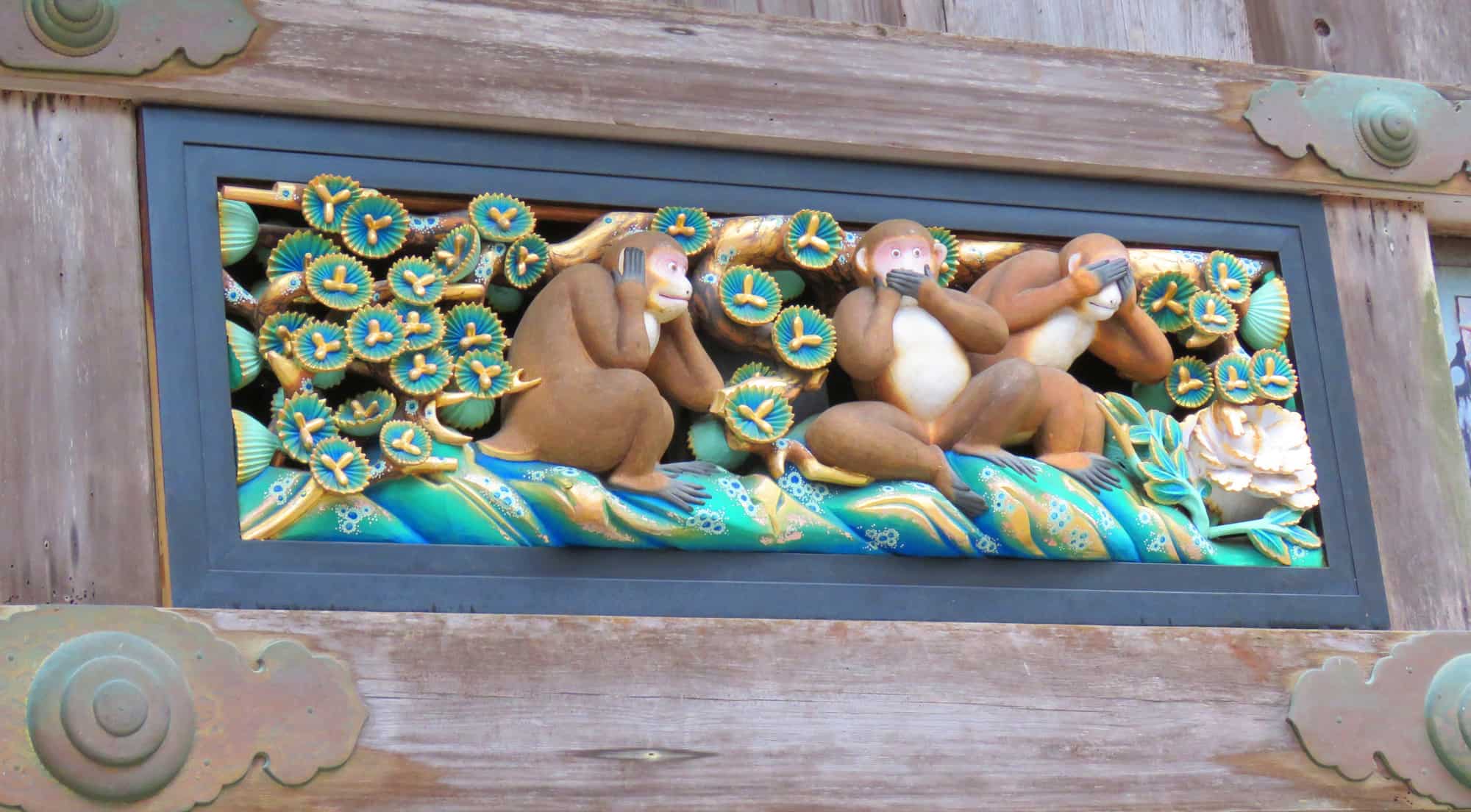
.
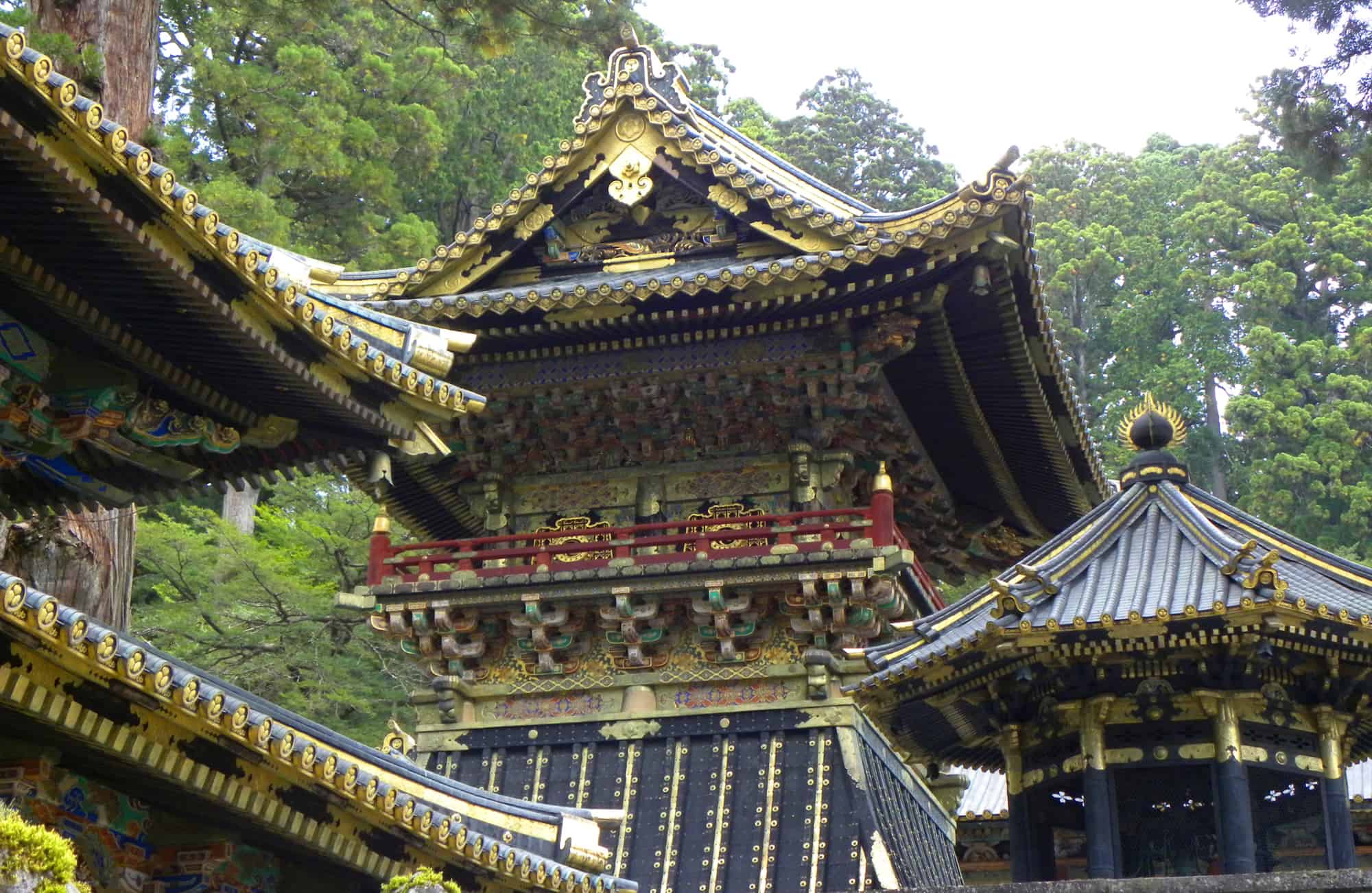
.
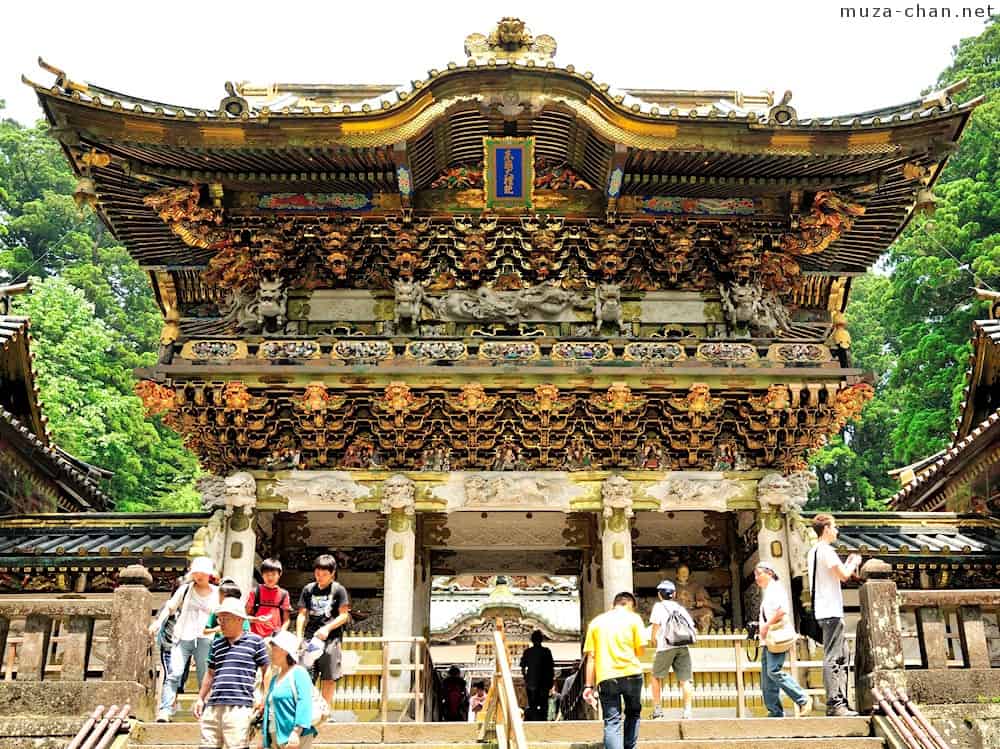
.
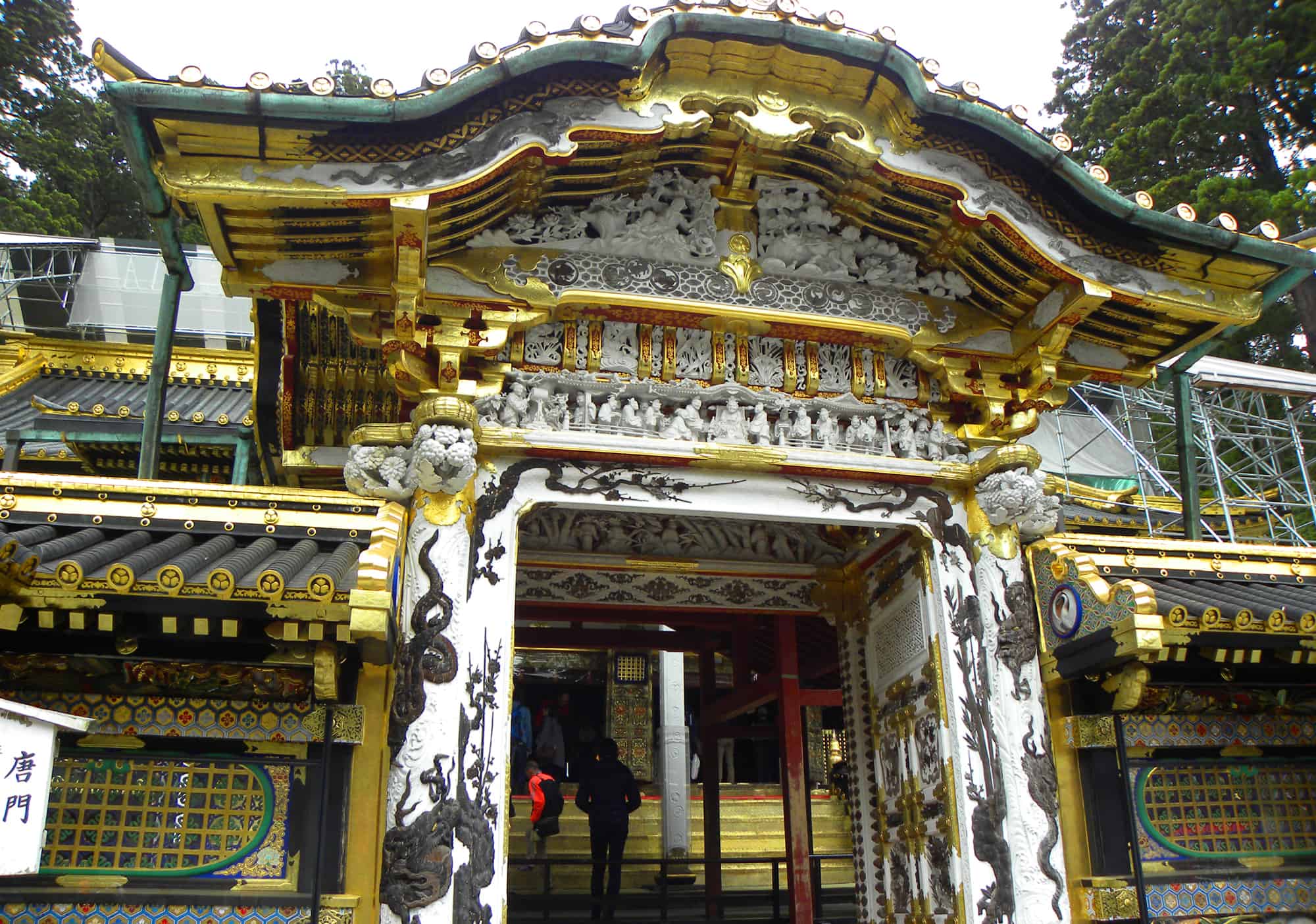
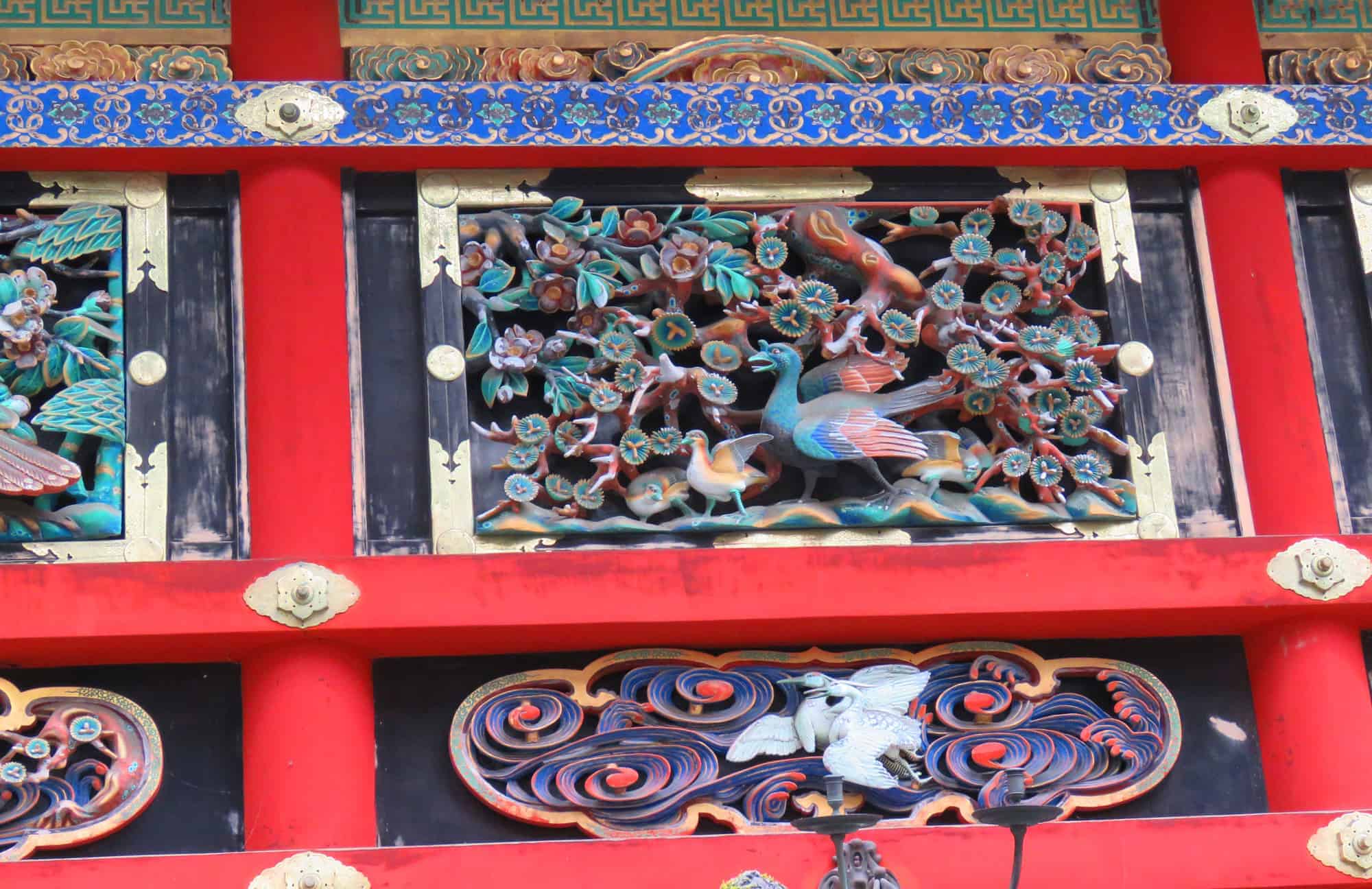
.
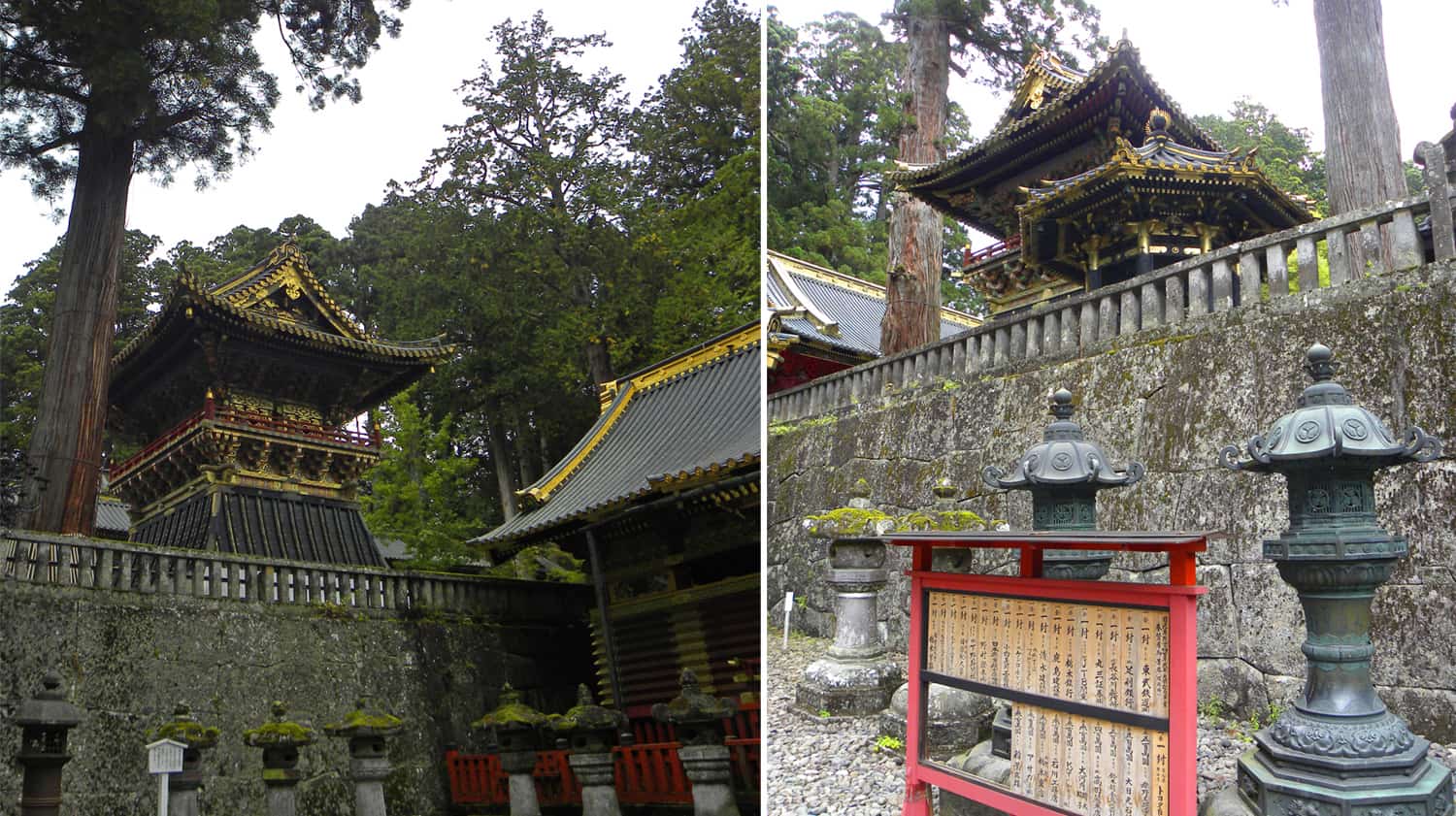
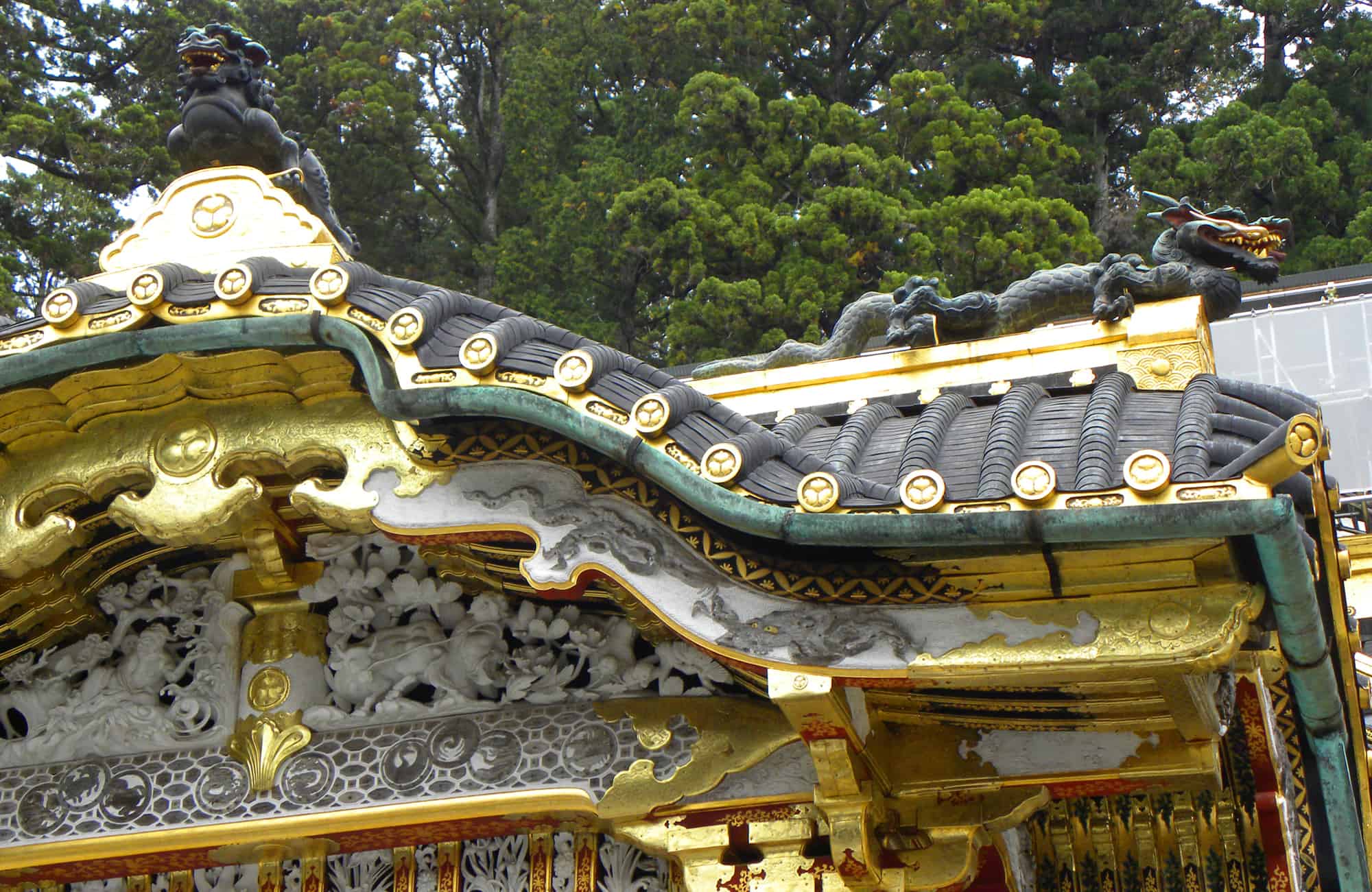
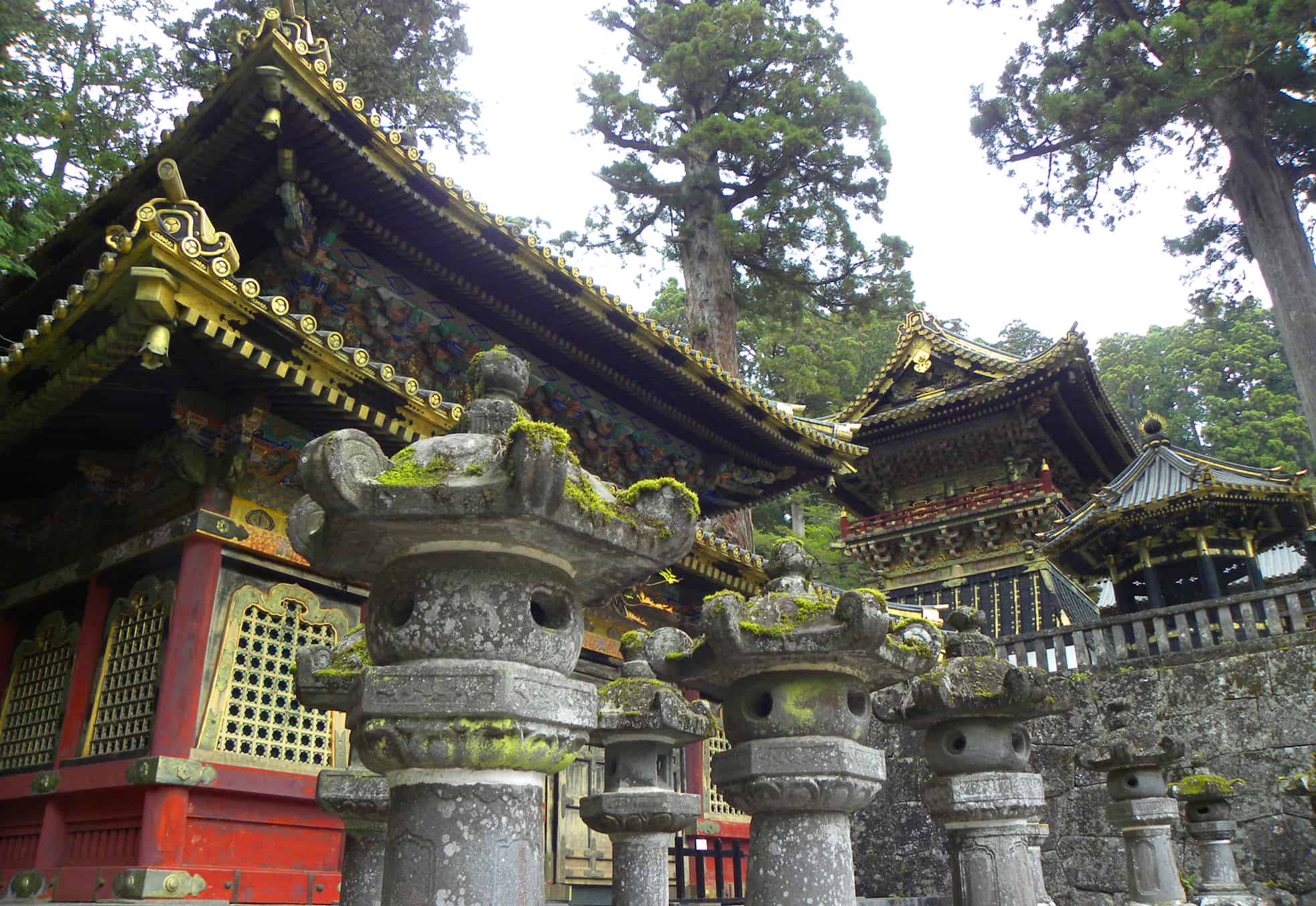
.
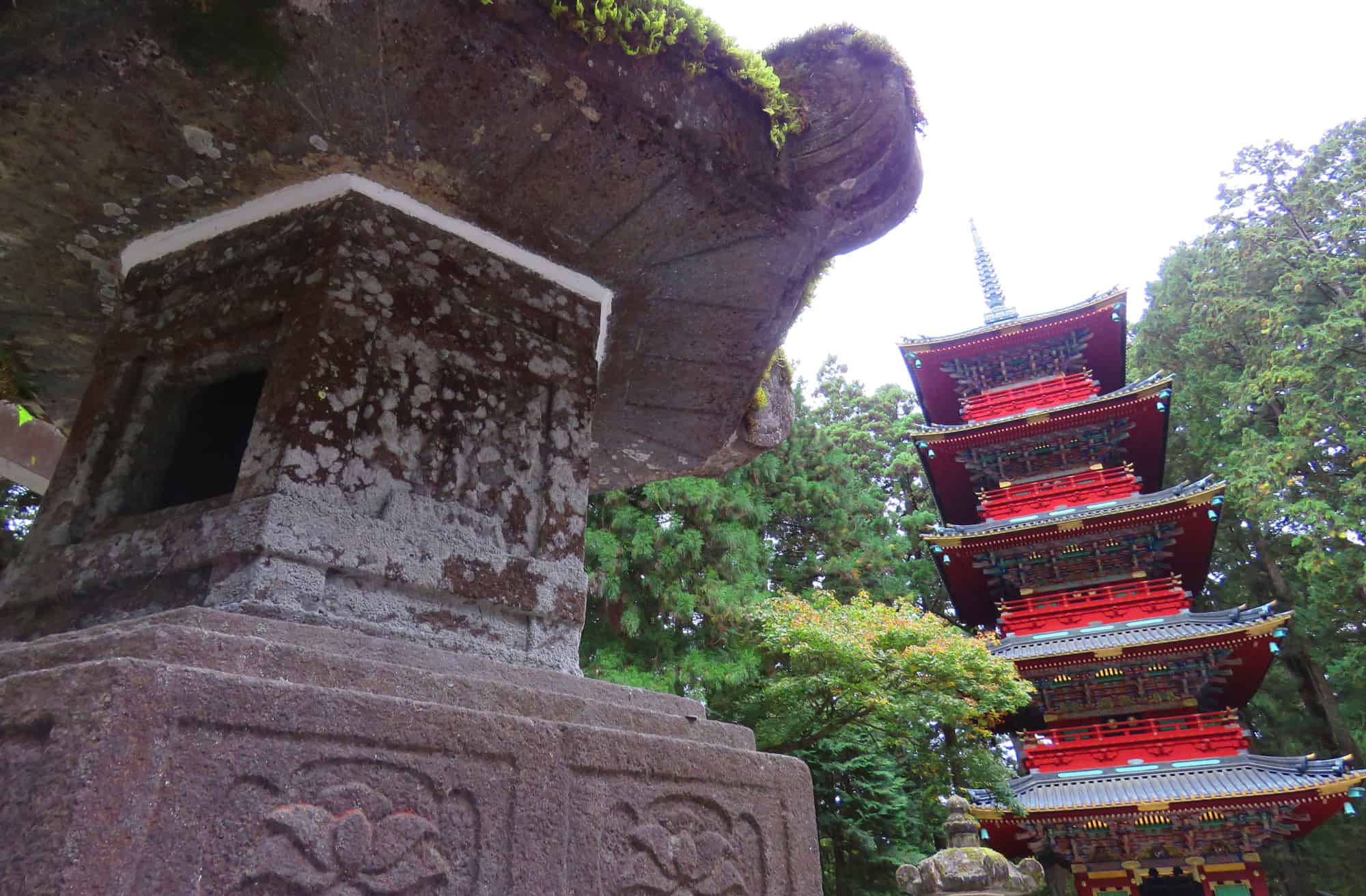
.
Futarasan Shrine
This shrine (right next to the fabulous Taiyuin shrine which I’ll cover below) was founded in 782. The grounds are not as interesting as either Toshogu and Taiyuin – but it is one of the more important religious shrines and is dedicated to the gods of the mountains.
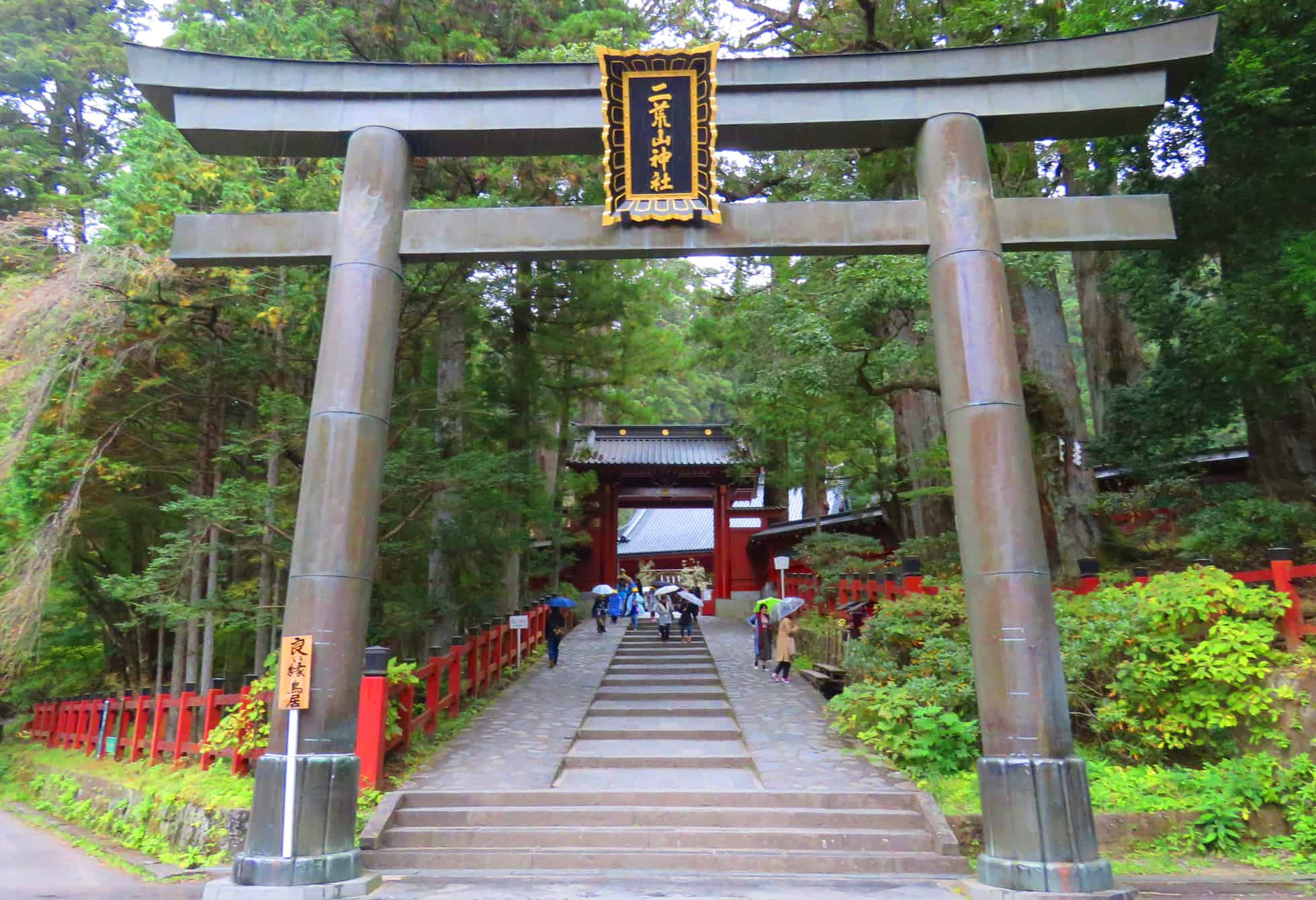
.
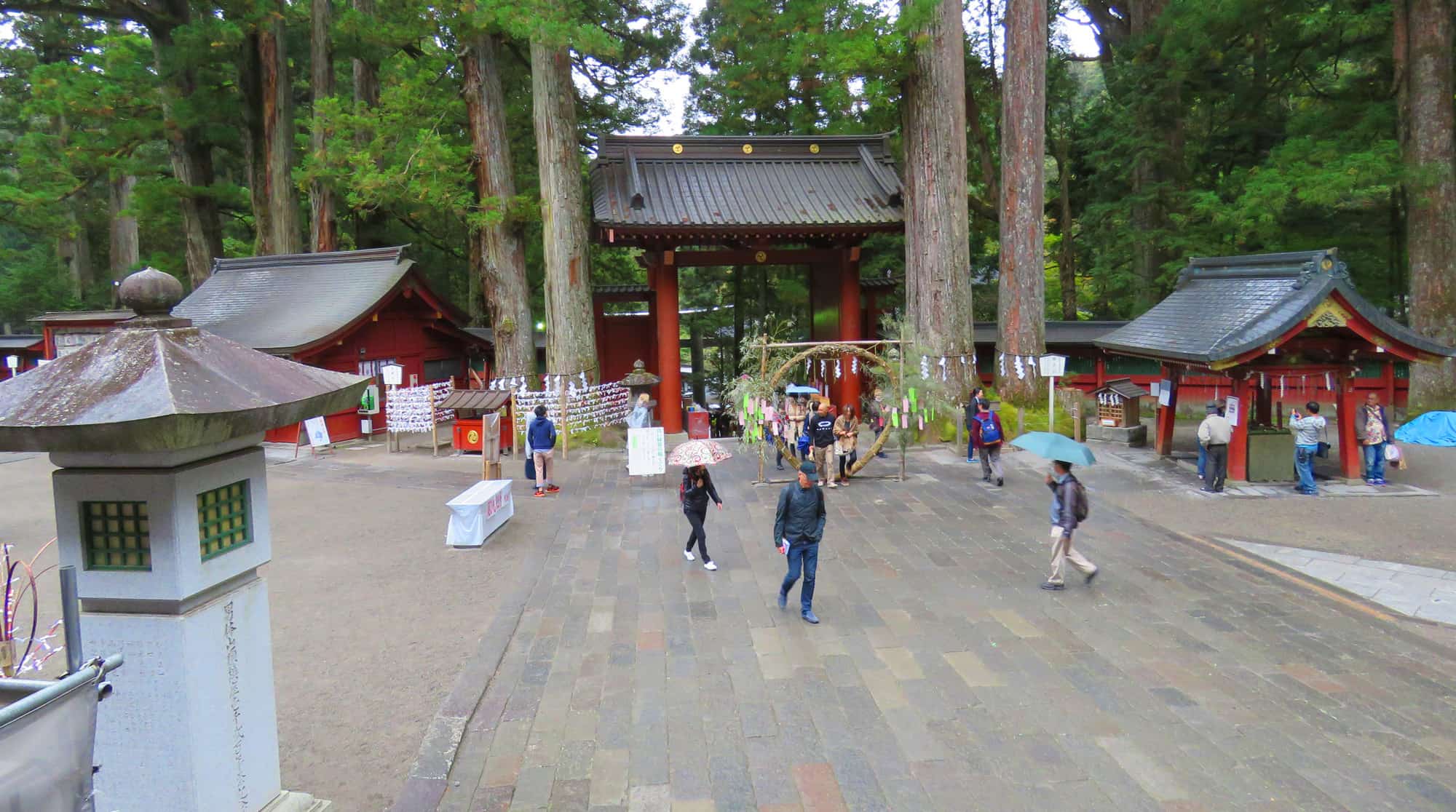
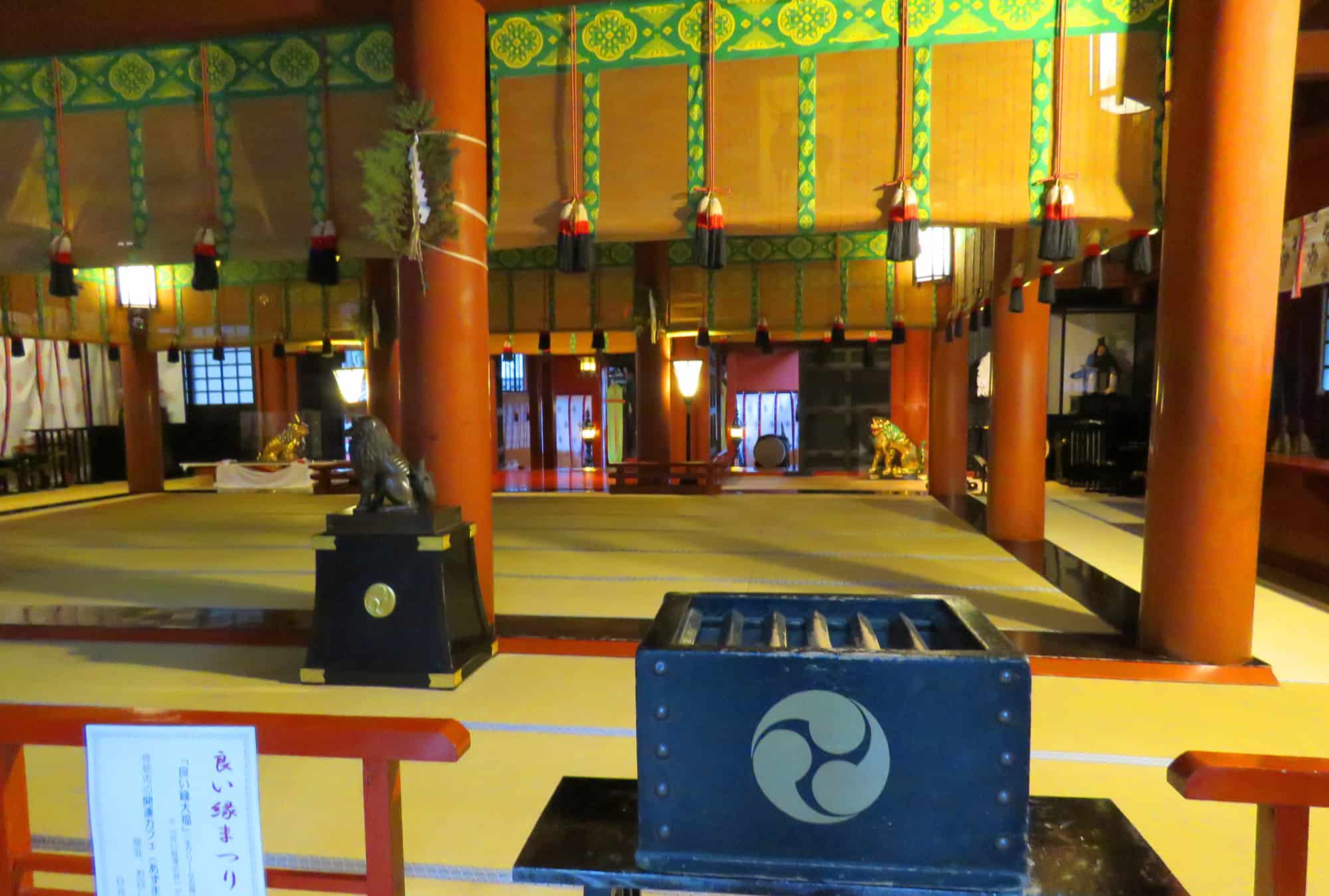
.
.
Taiyuin Shrine
The Taiyuin shrine was actually our highlight in Nikko.
It was completed in 1653 and is the mausoleum of Tokugawa lemitsu, the grandson of leyasu and the powerful 3rd shogun who is known for having closed Japan to foreign commerce and isolating the country from the world for over 200 years. What makes it special is the setting: it is located in a heavily forested area and built up over several levels going up a hill. It has moss-covered gardens, ornate gates and colourful, threatening guardians. As our guidebook said “if Toshogu is splendid, Taiyuin is sublime”.
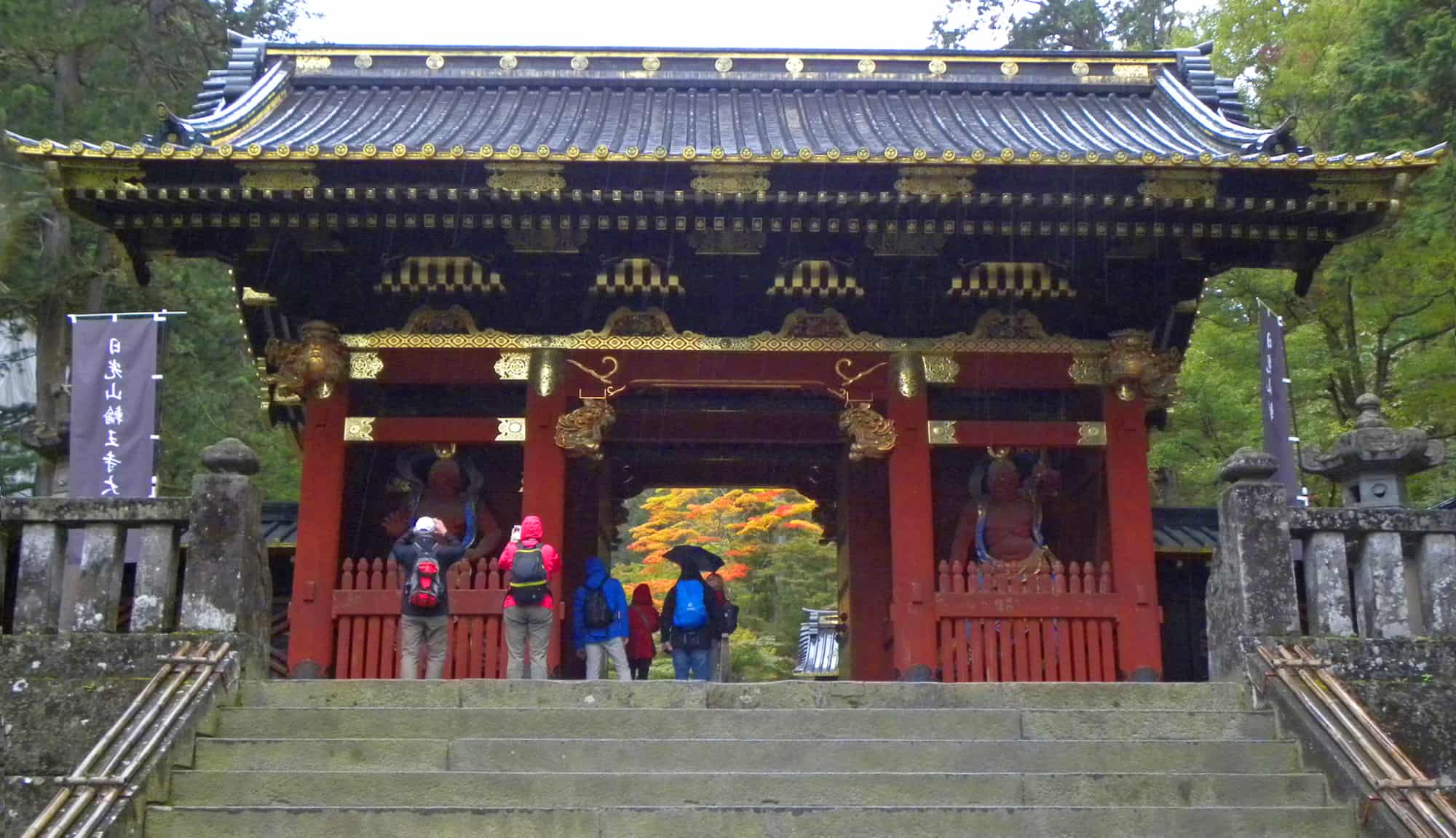
.
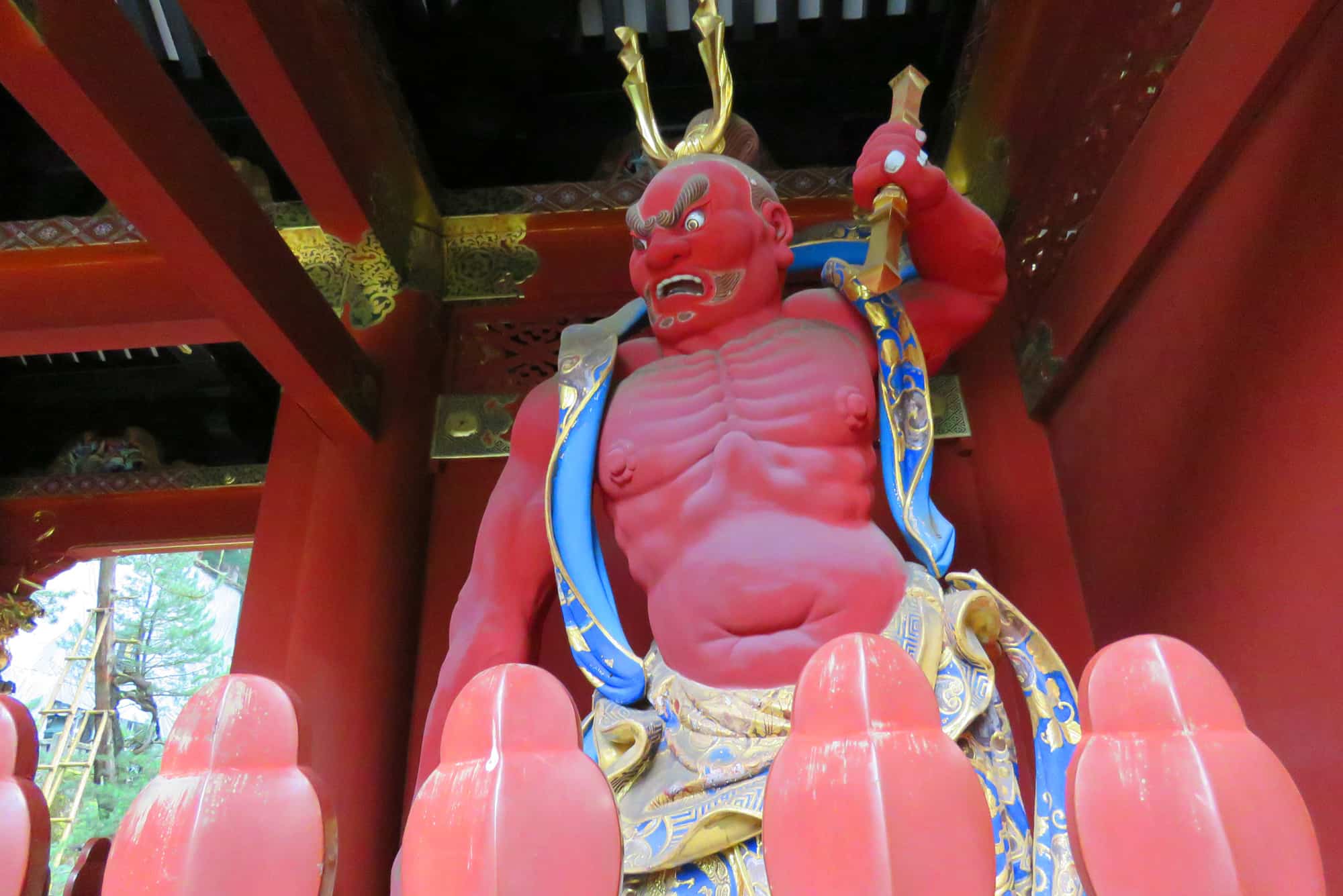
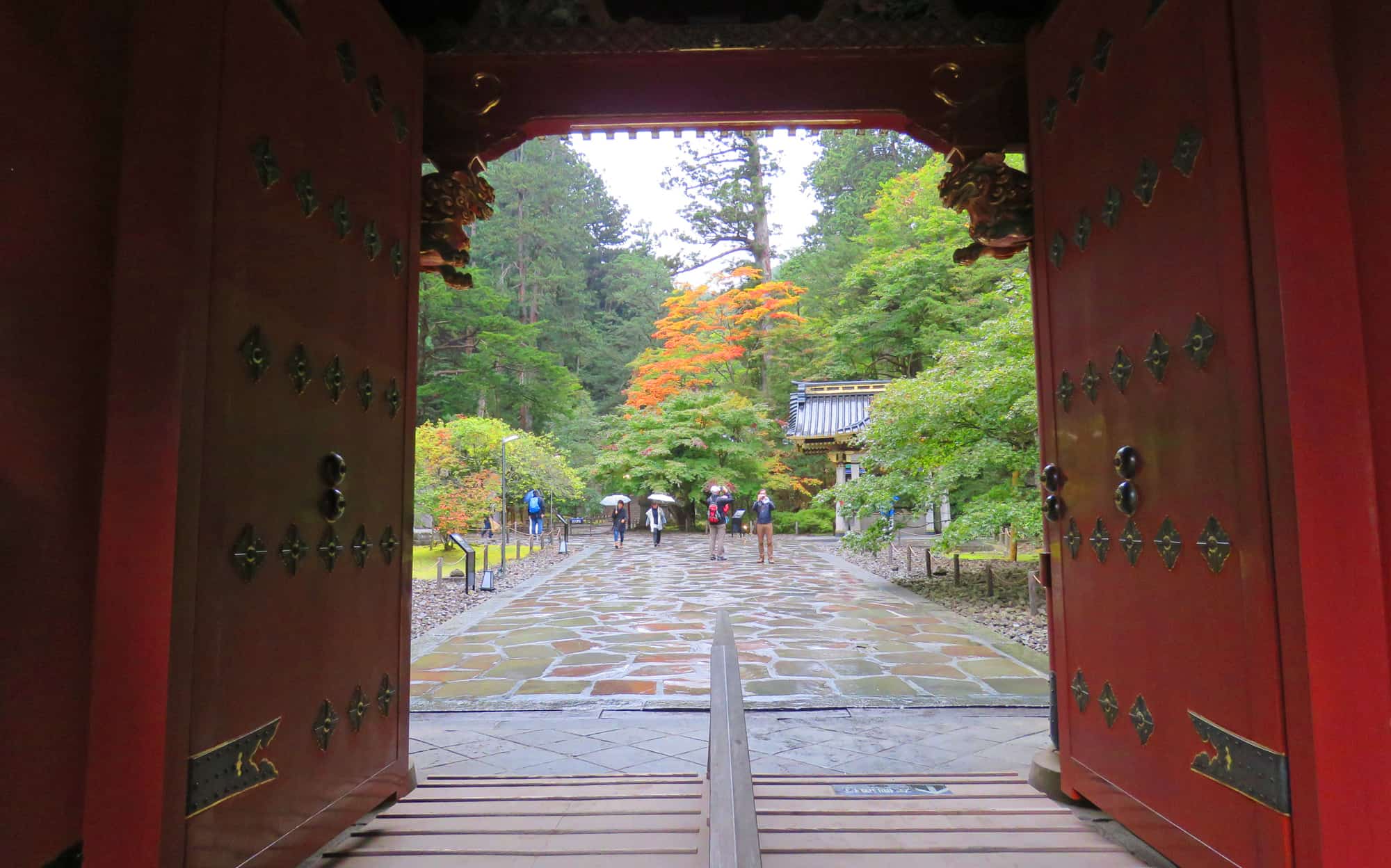
.
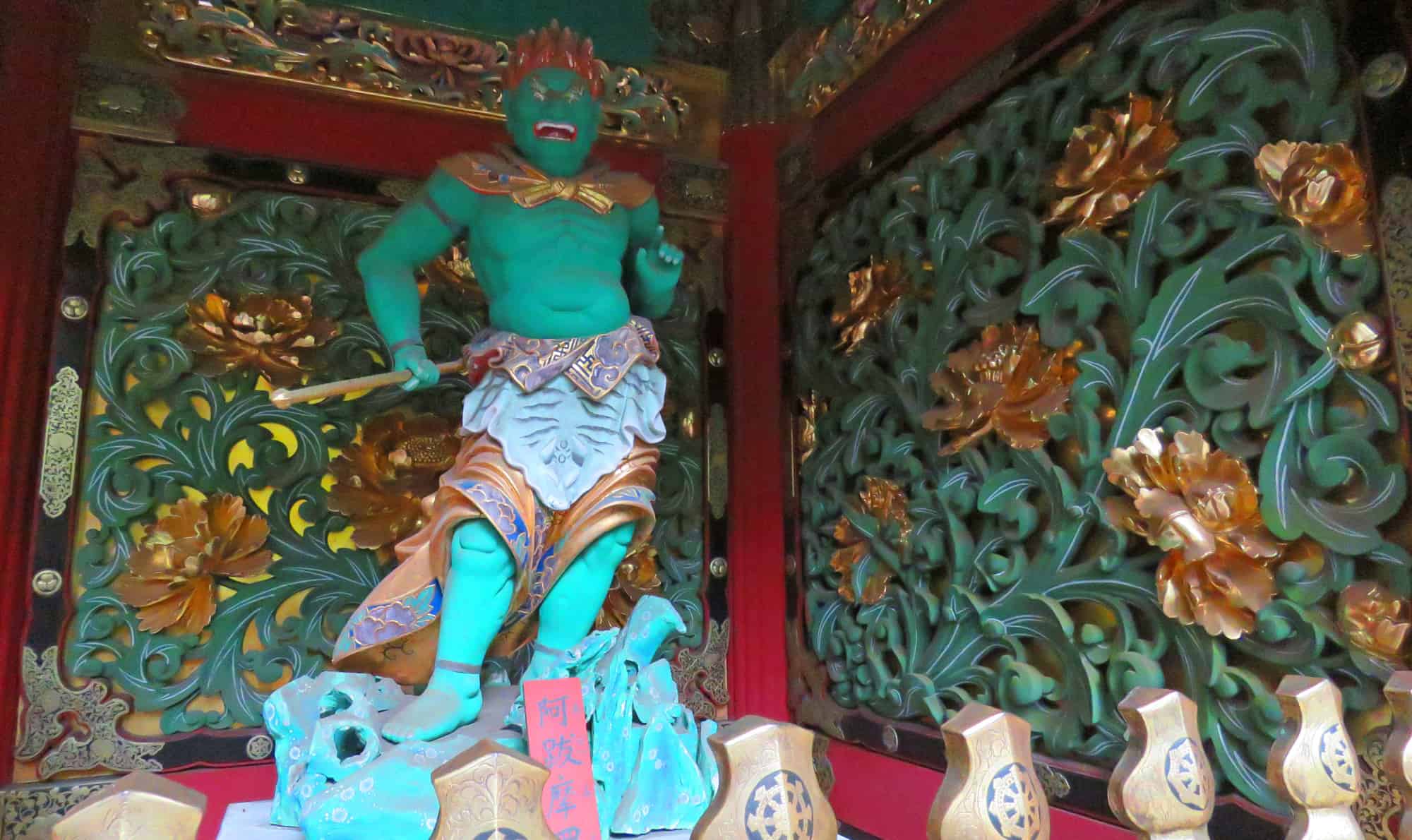
.
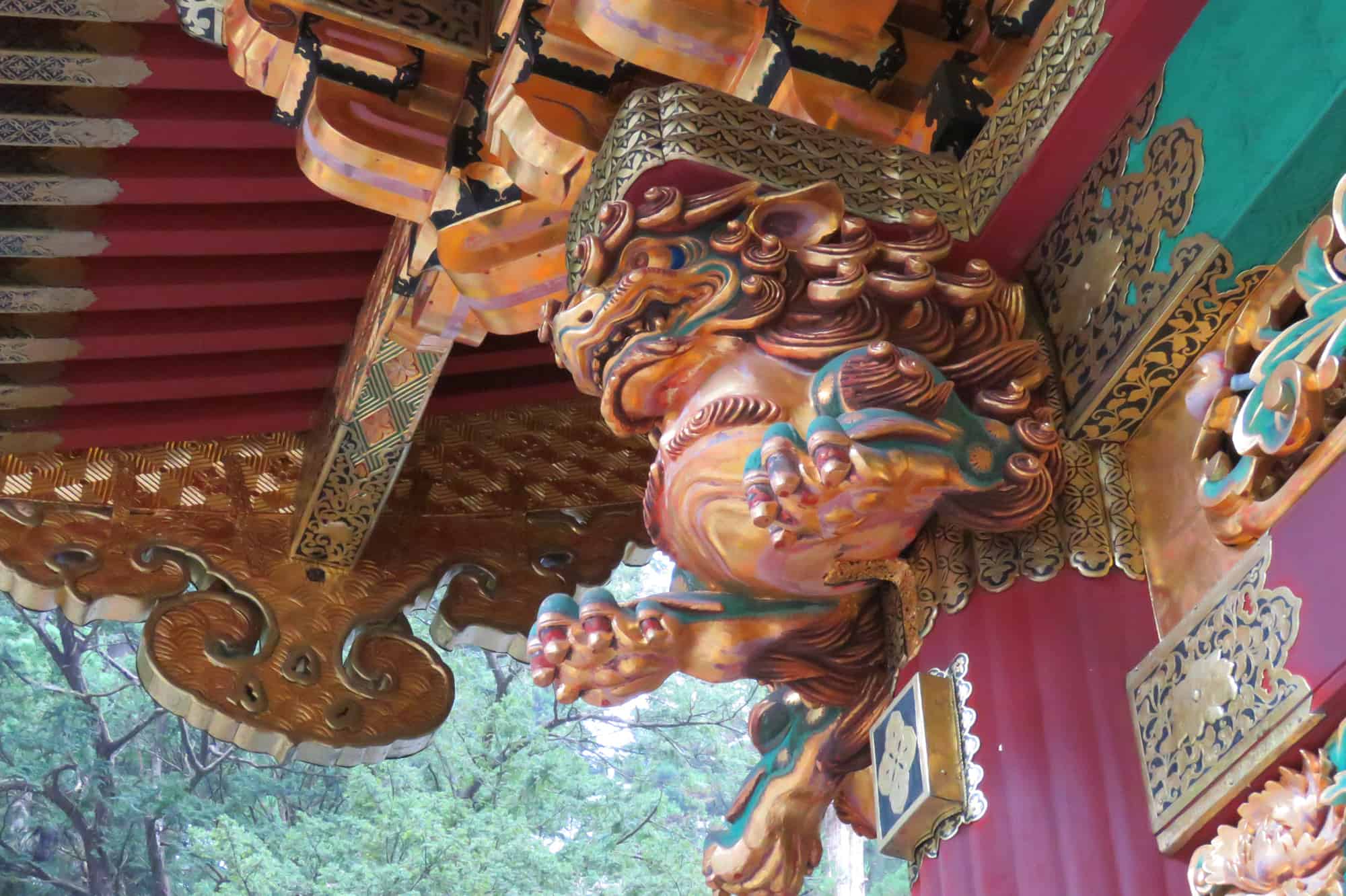
.
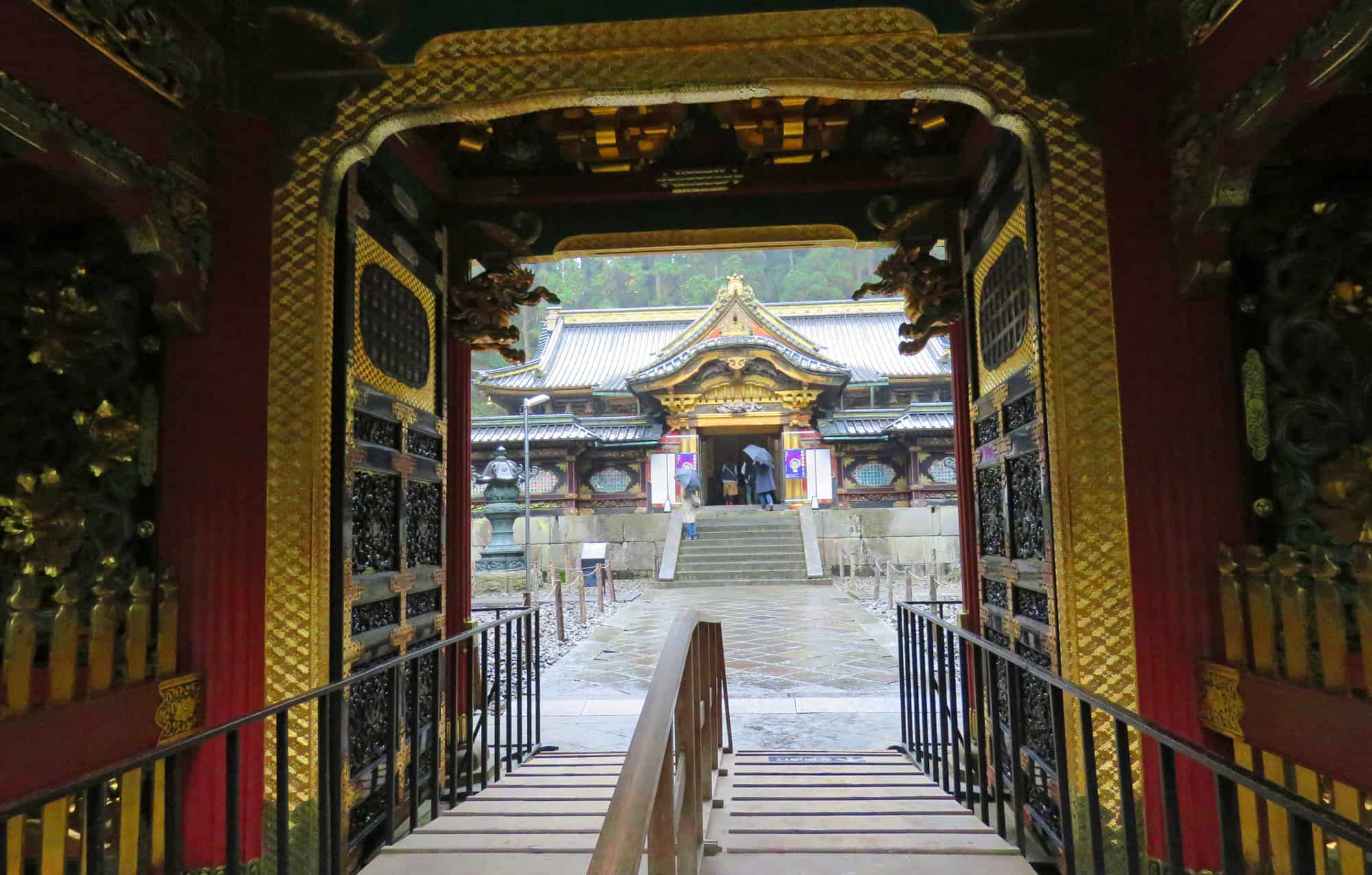
.
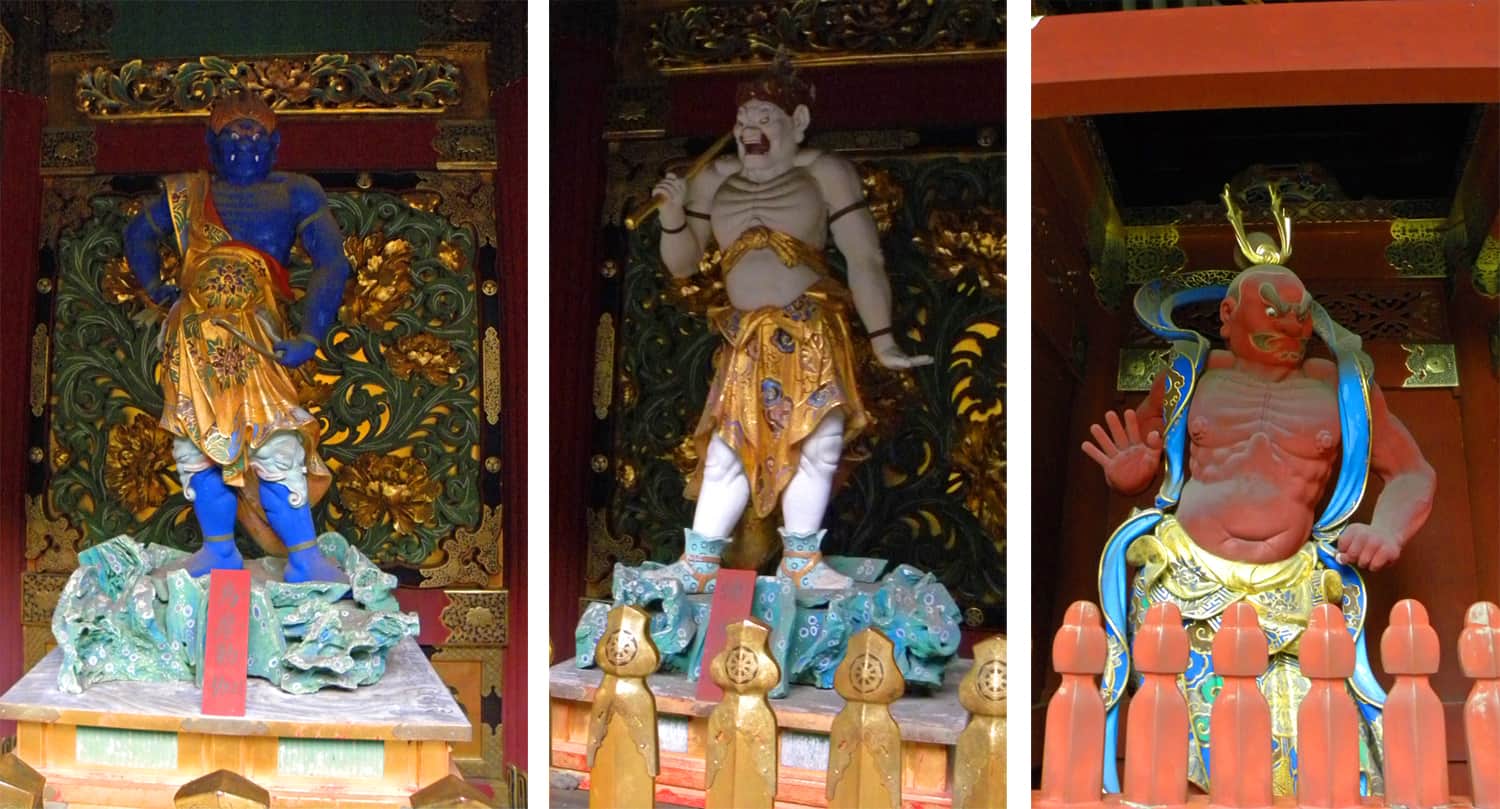
.
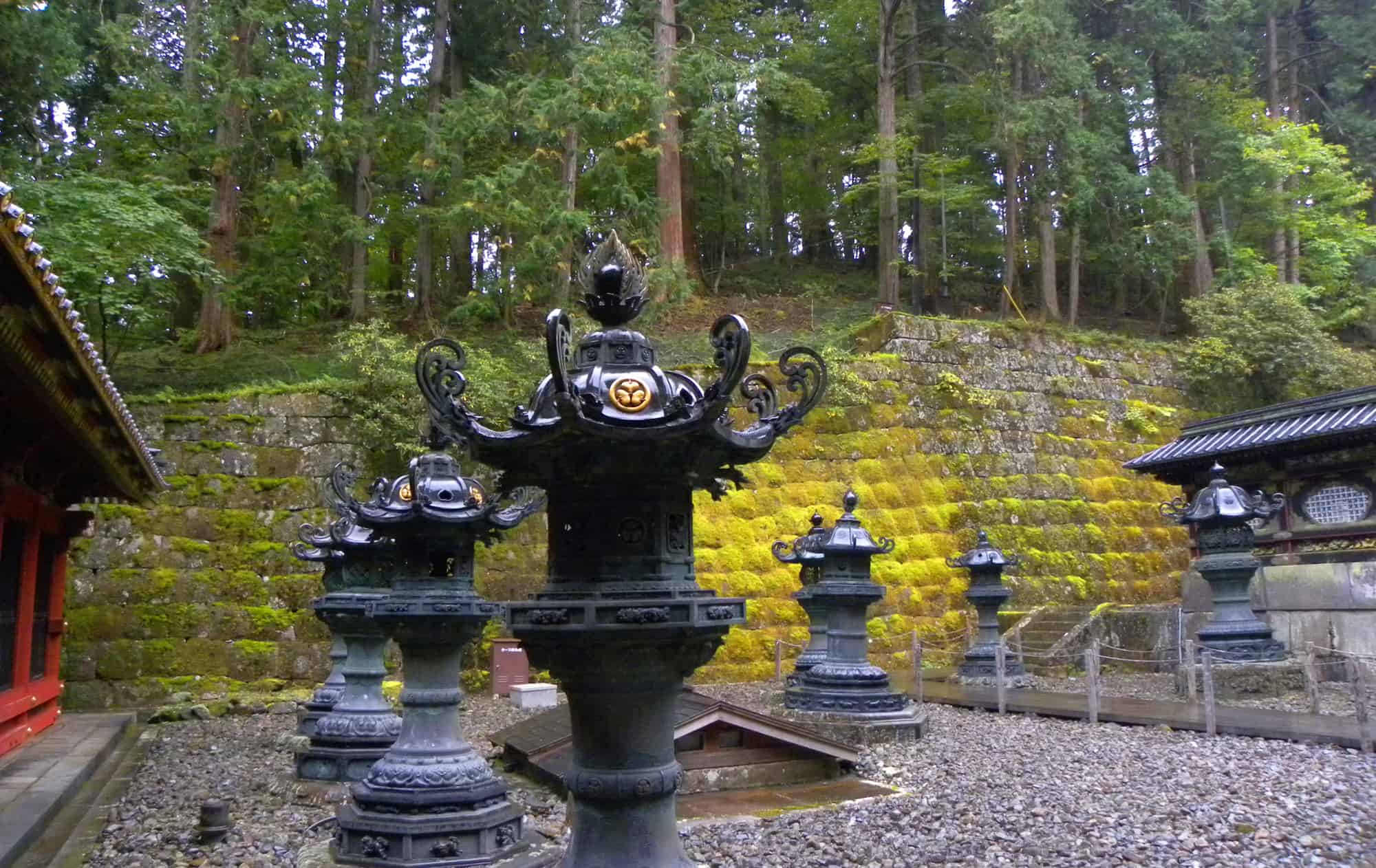
.
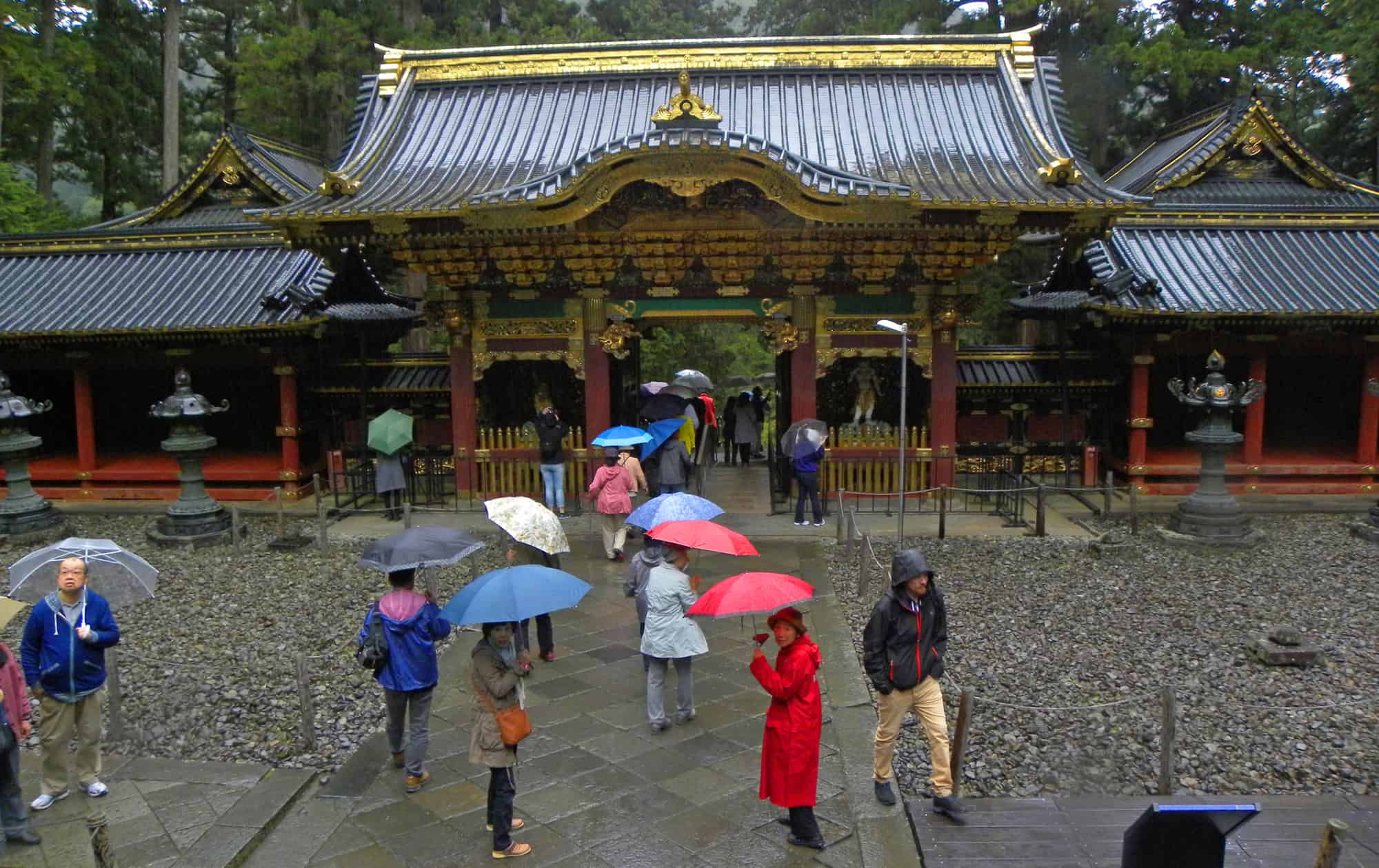
.
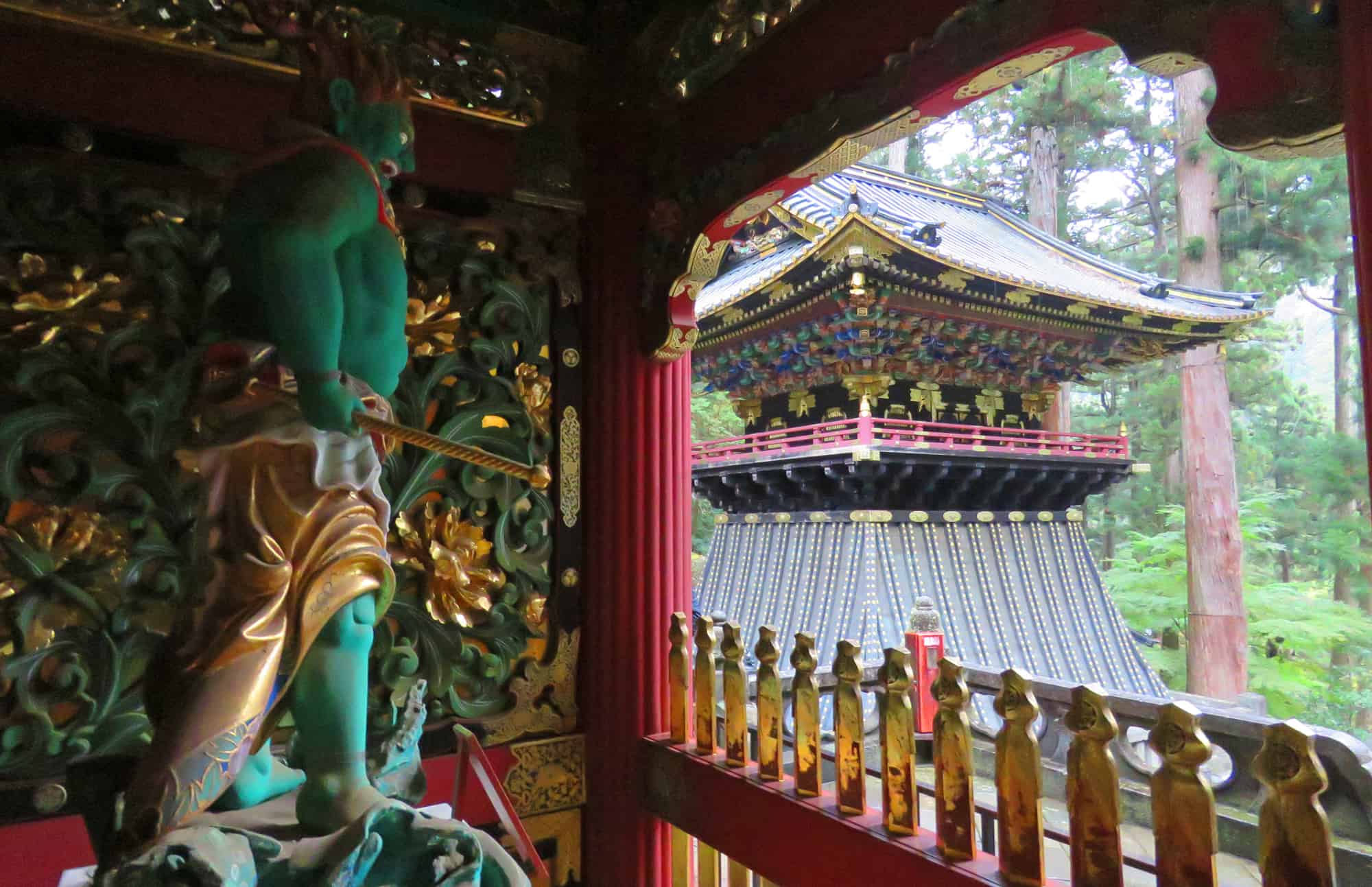
.
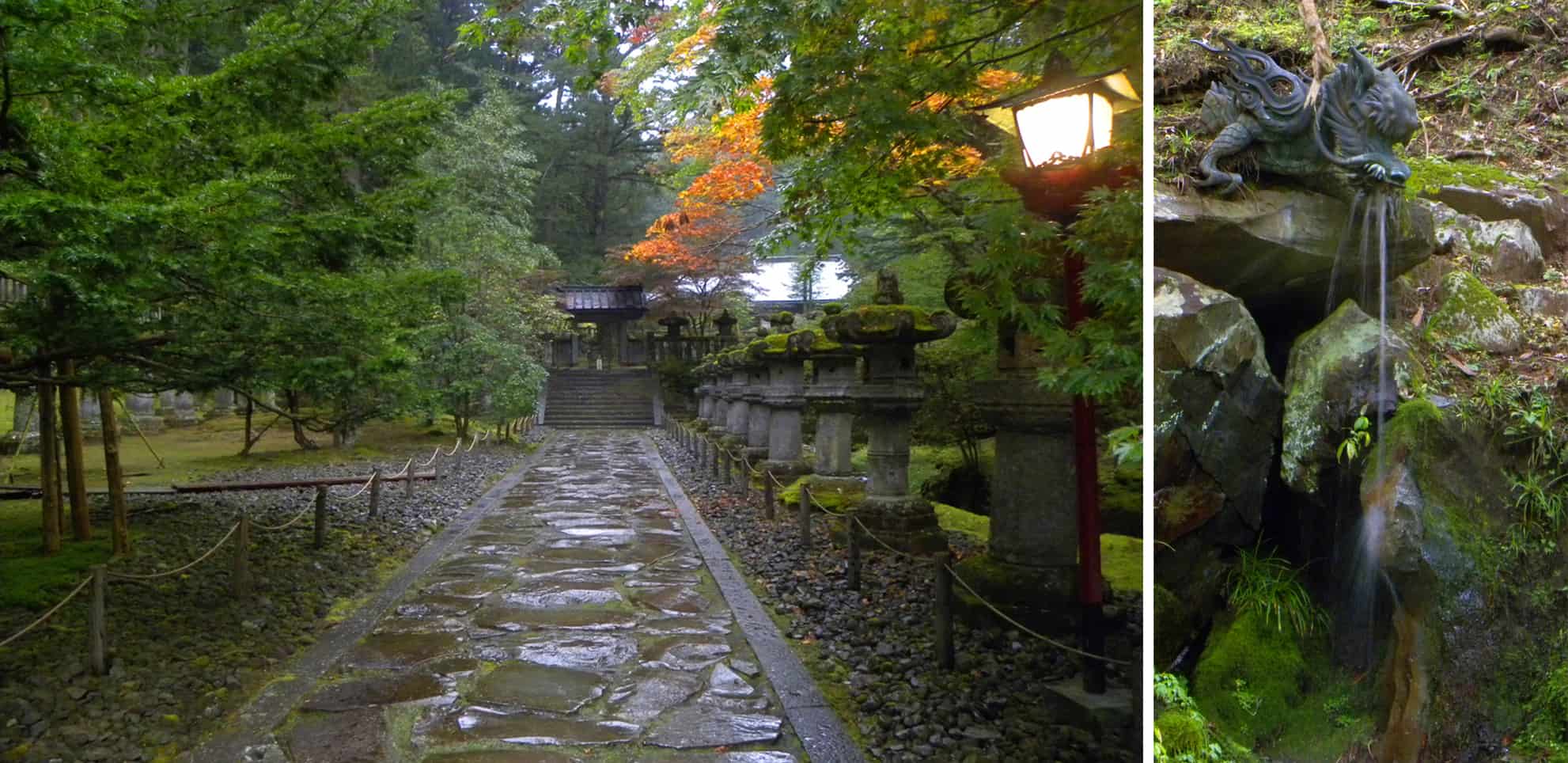
It started to pour heavily as we left Taiyuin and we decided to call it a day. We had seen the major highlights. The two other things we had hoped to see were the Shinkyo bridge (a red-lackered wooden bridge that looks quite dramatic in photos) and the Rinnoji temple (the first temple founded in Nikko).
.
Practical Information
– Getting there. If you’ve bought the JR pass (which you can only buy overseas before coming to Japan) you can take a train from Shinjuku station in Tokyo. If you don’t have a JR Pass, the best option to get to Nikko is to take the Tobu Line from Asakusa station. That’s what locals do. Regular trains from there cost 1360 Yen one way (non-reserved. It’s basically a commuter train). A few times a day the Tobu Line also has the special Kegon train which is double the cost but which has reserved seating and gets to Nikko faster. Either way, it’s cheaper than taking the JR train from Shinjuku which (if you don’t have the pass) costs 5000 Yen one way.
– Accommodation. We chose The Gate Hotel because it’s right next to the above mentioned Asakusa station. Perfect for exploring Asakusa and Ueno as well as taking a trip to Nikko.
– Getting around Nikko. The best way is to take the Hop On/Hop off bus which makes the tour to all the major sites in Nikko and passes by every 15 minutes. You can buy the ticket at the train station, the bus stop is right outside.
– Organized Tour. I wish we had done an organized tour of Nikko. Between the train ride (and the even longer one coming back) and organizing the Hop On/Hop Off it was a long day and we lined up for a lot of things. Instead I would recommend a tour like this. Save yourself all the hassle.
– Tourist Information. There is a tourist information office at the train station in Nikko. They’ll give you a detailed map.
.If in the Tokyo area, make sure to take a daytrip to Nikko.
Related: Asakusa and Ueno – the best part of Tokyo
Related: How to see Tokyo with a Free Volunteer Guide
Related: Our Top Highlights in Kyoto
Ps. If you find our blog helpful, please consider using our links to book your flights, hotels, tours, and car rentals. Have a look at our Travel Resources page.

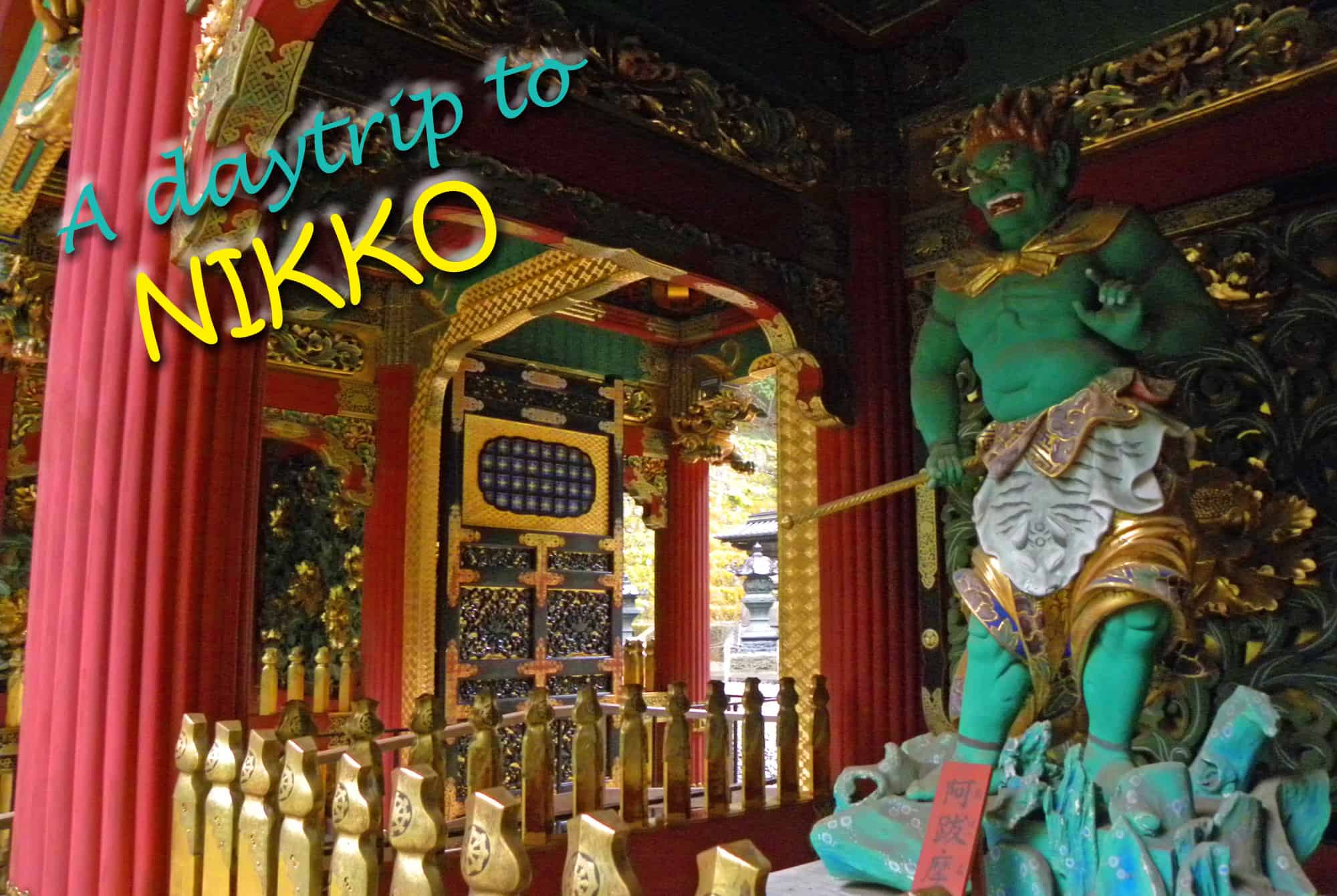
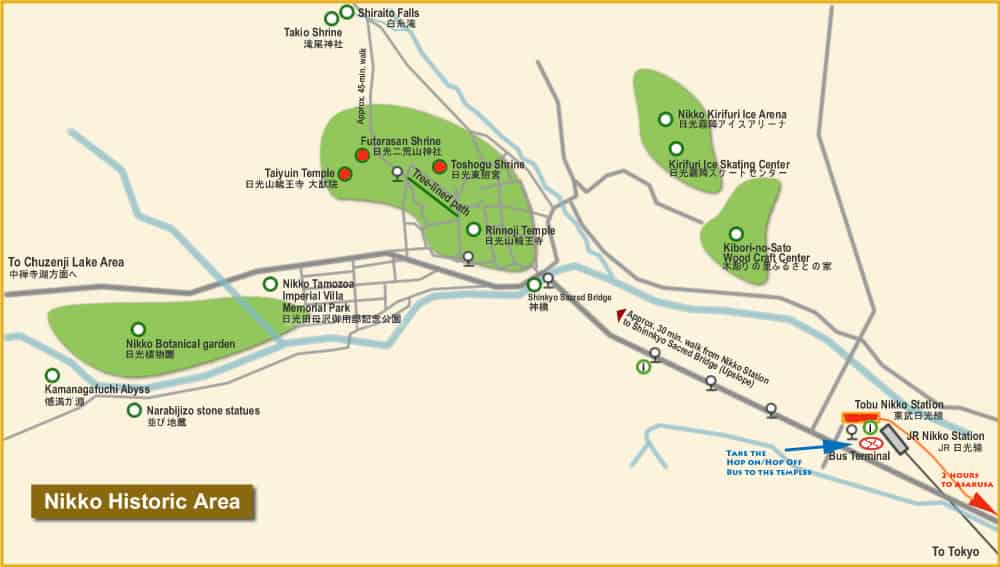
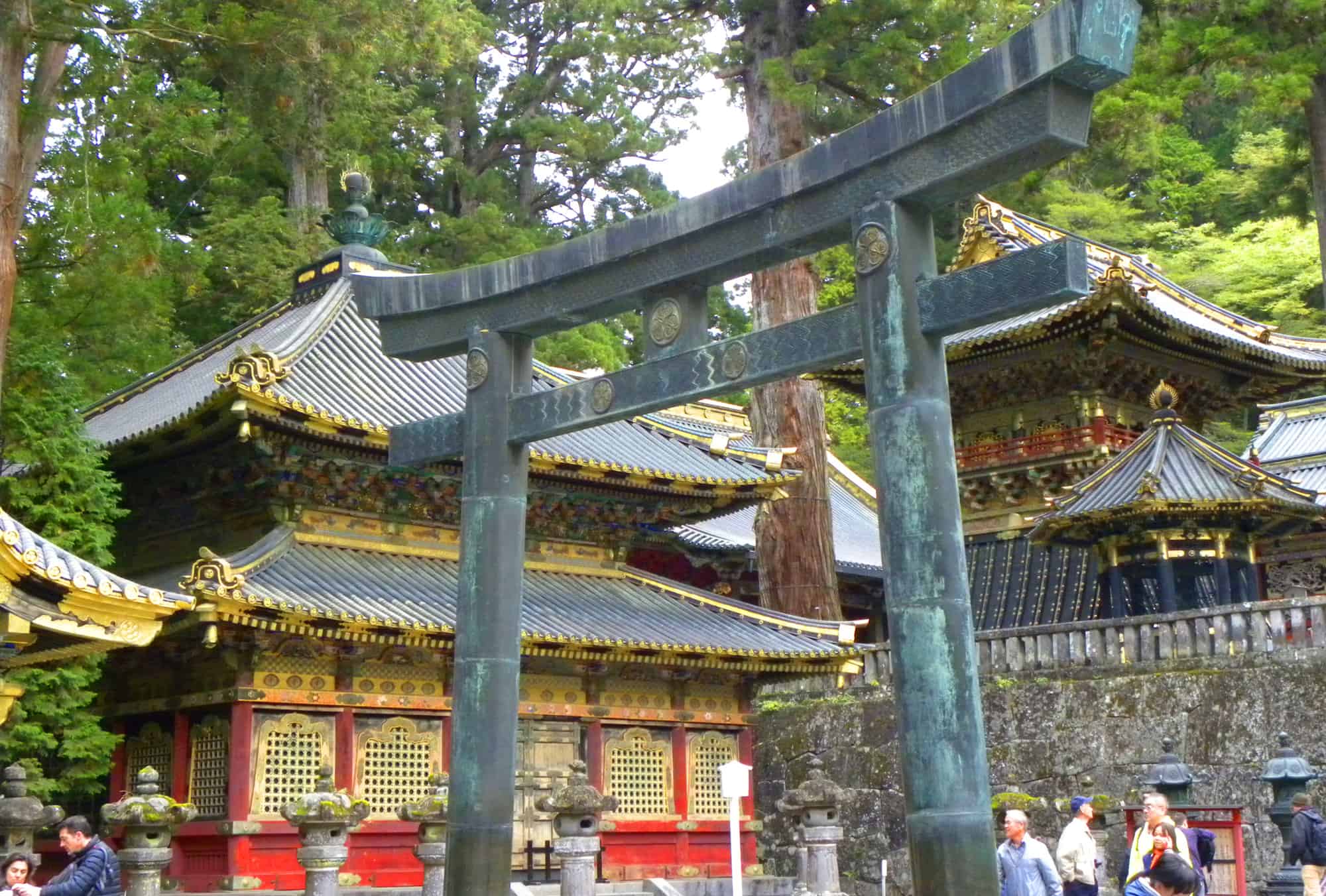
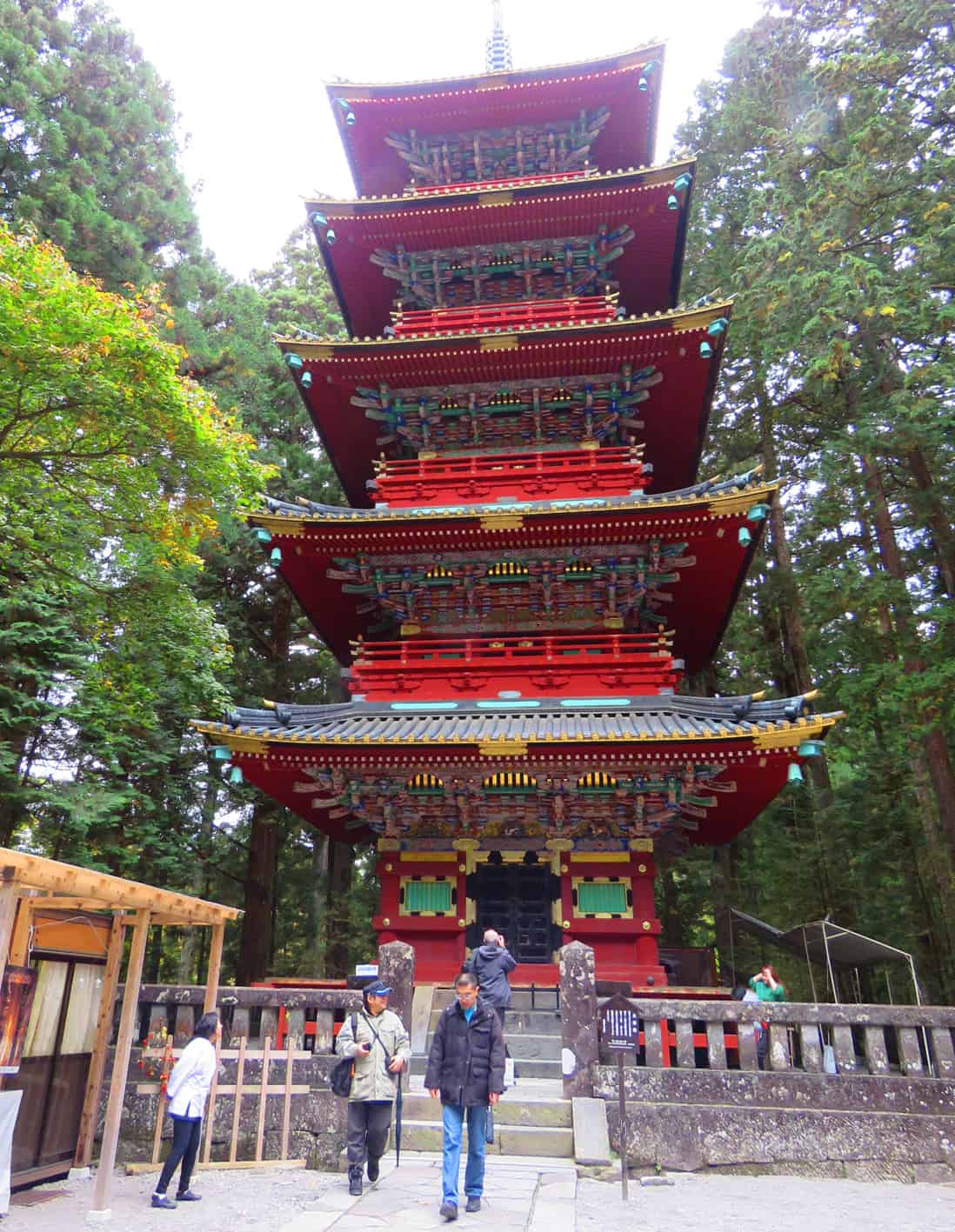

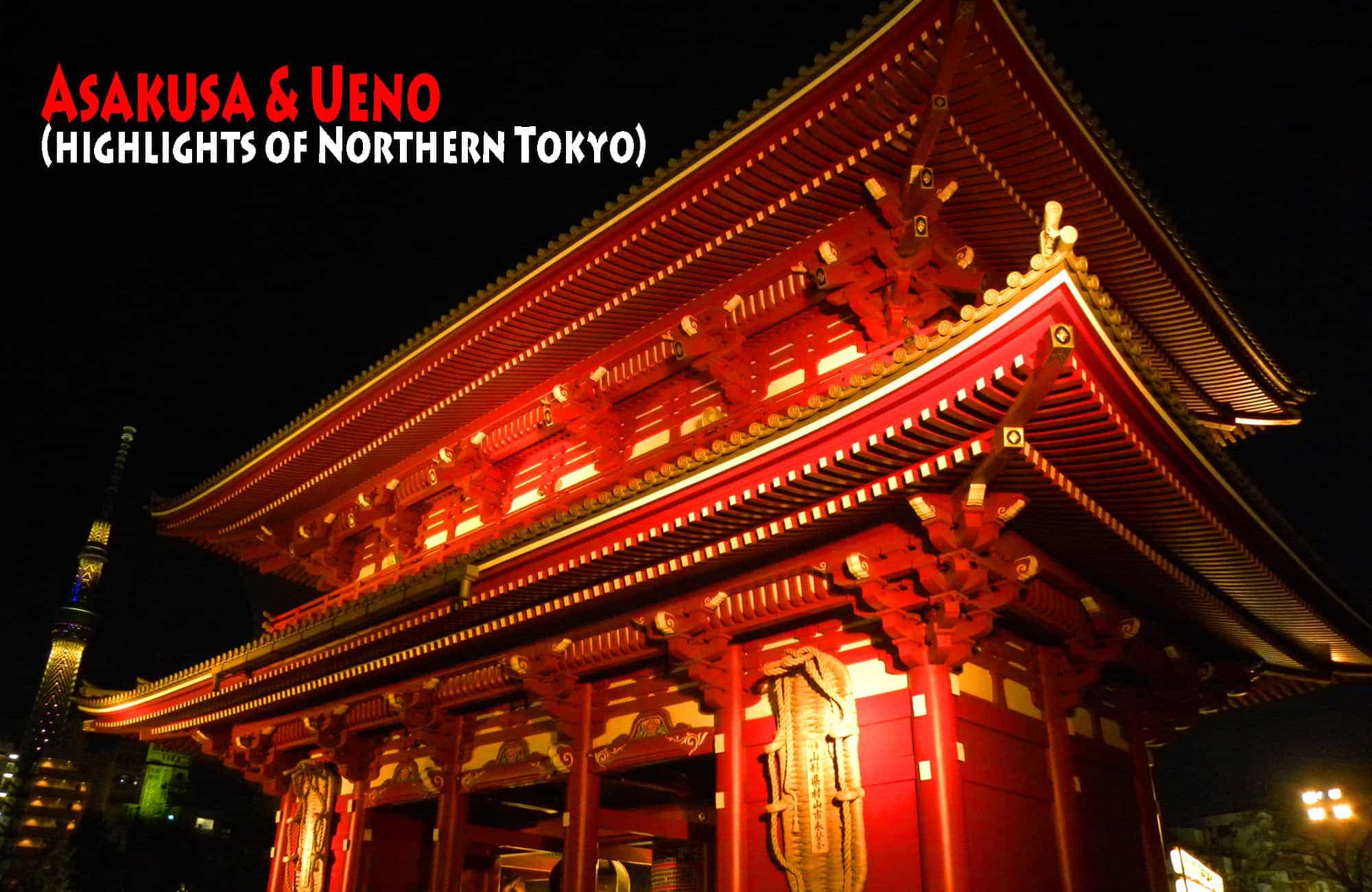
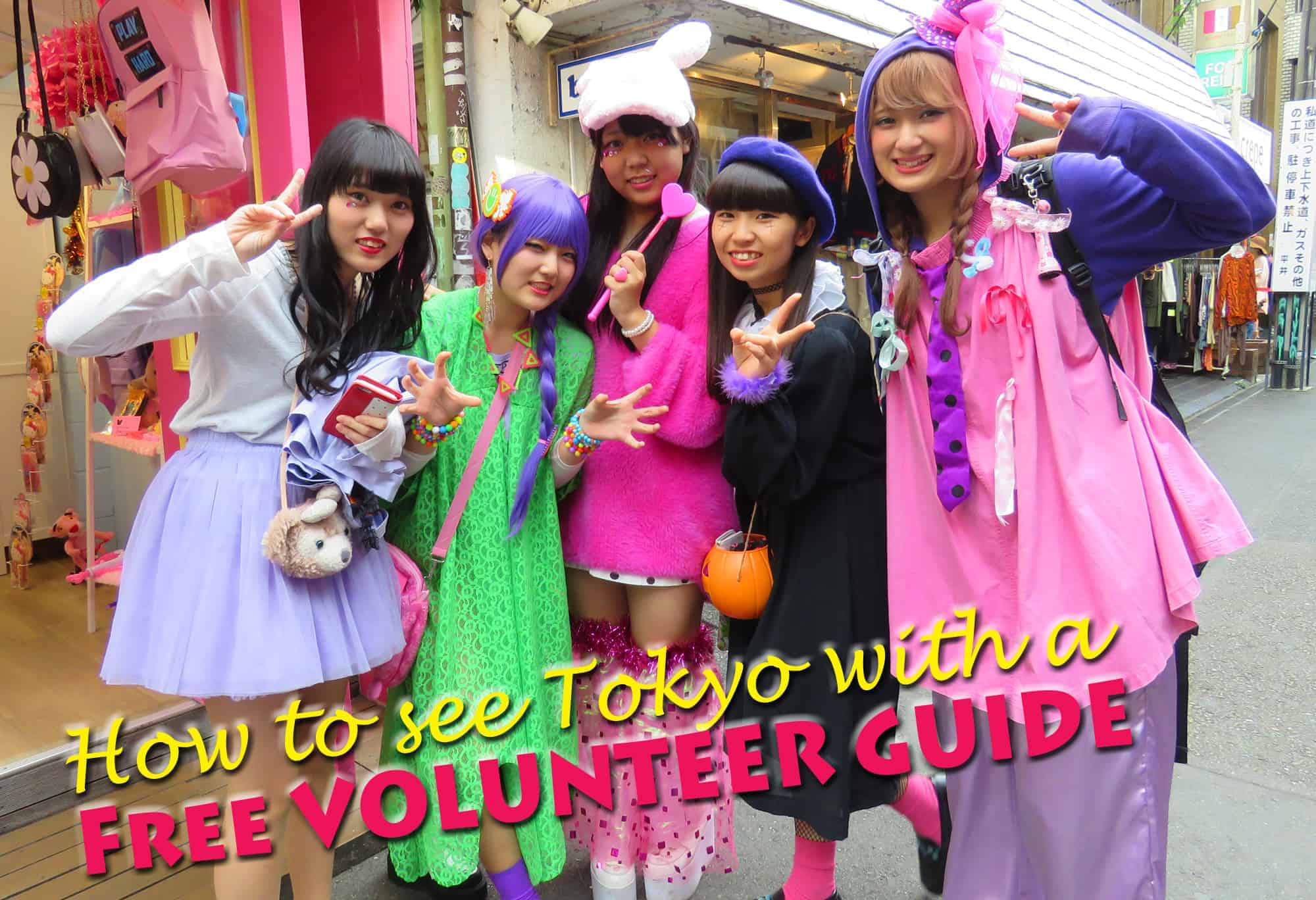
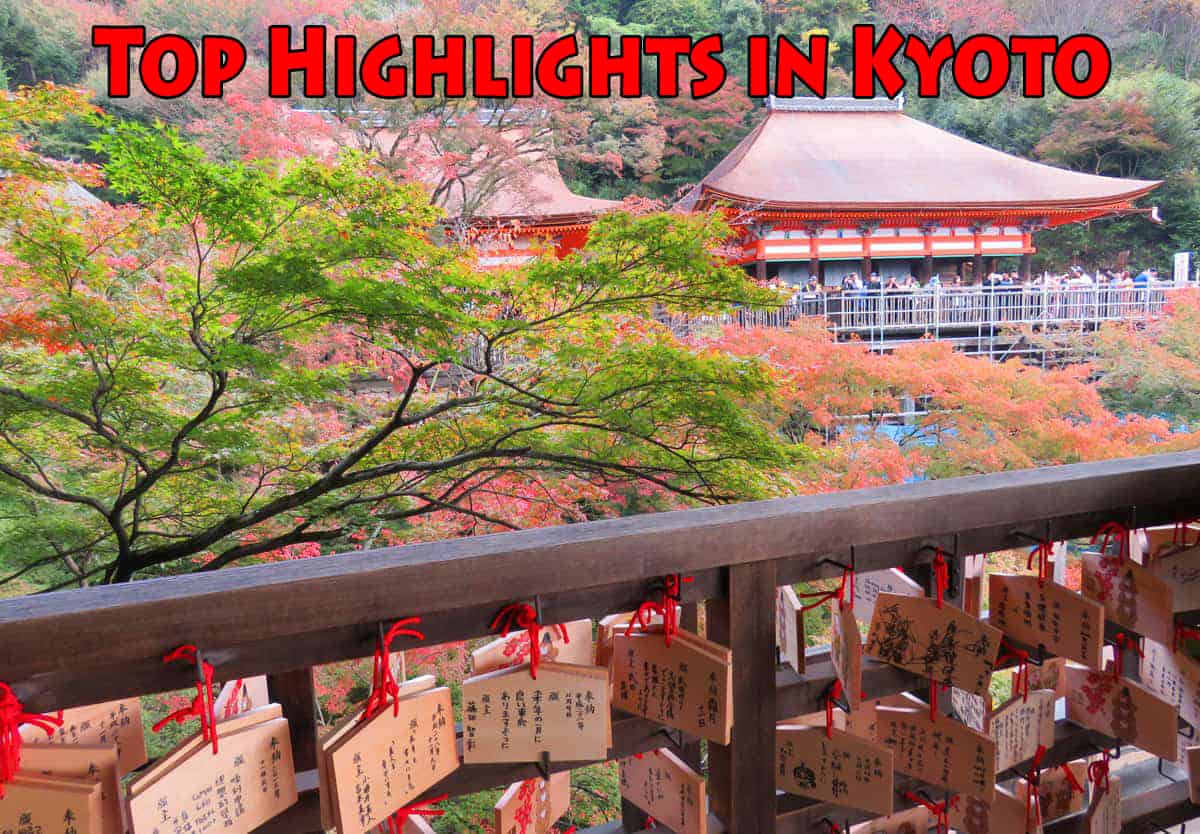
Love Google and your pics were great – totally un-suckable!! 🙂